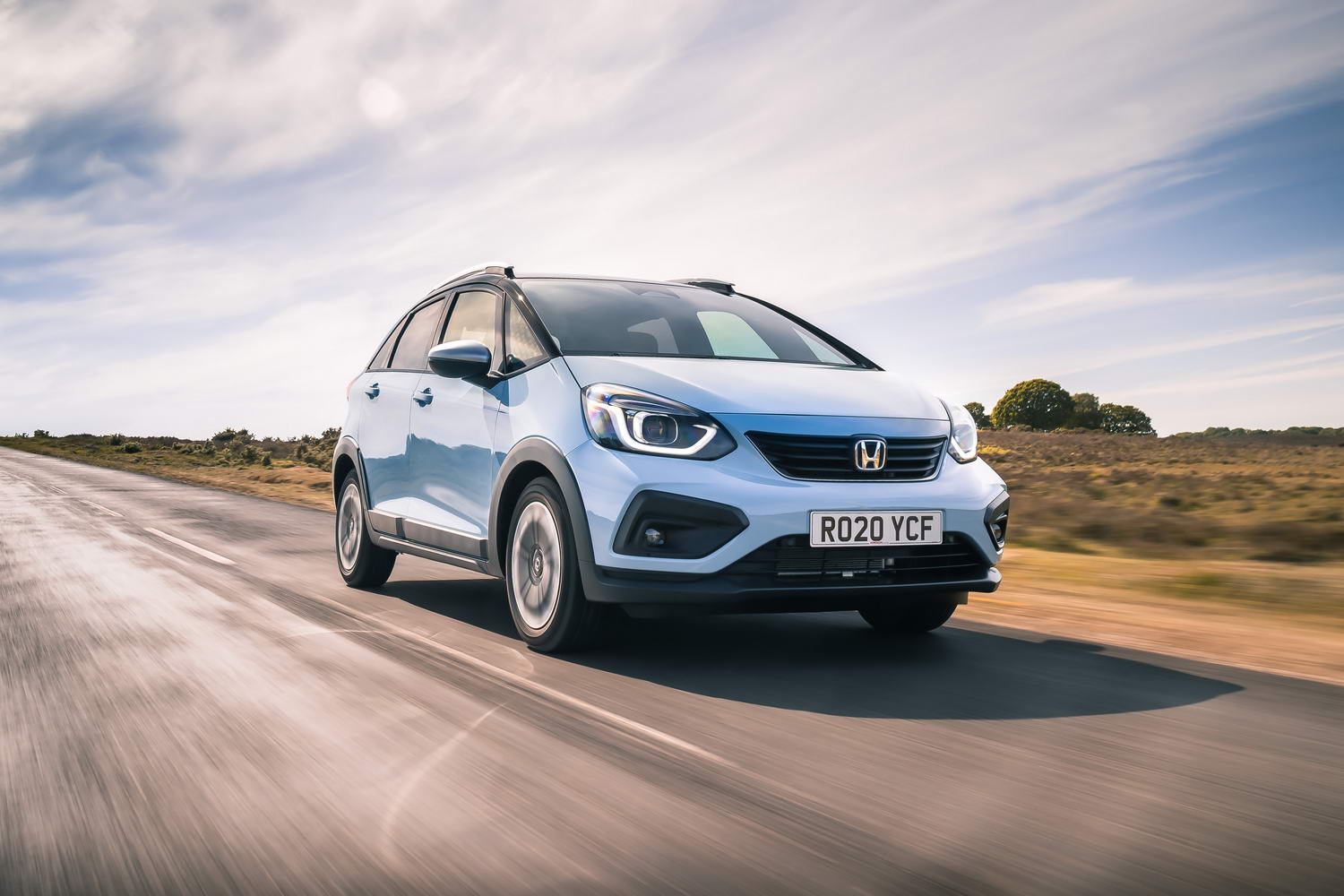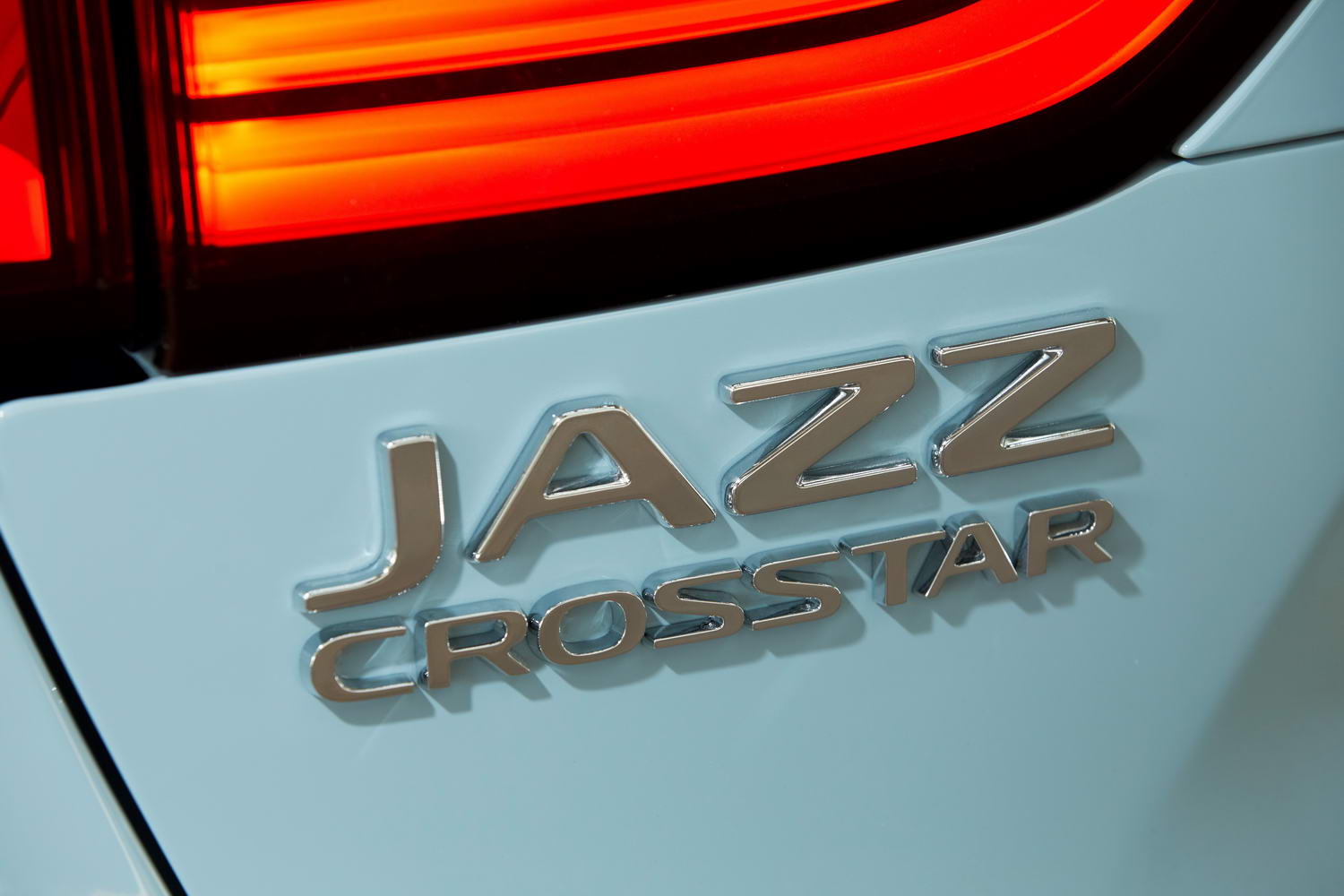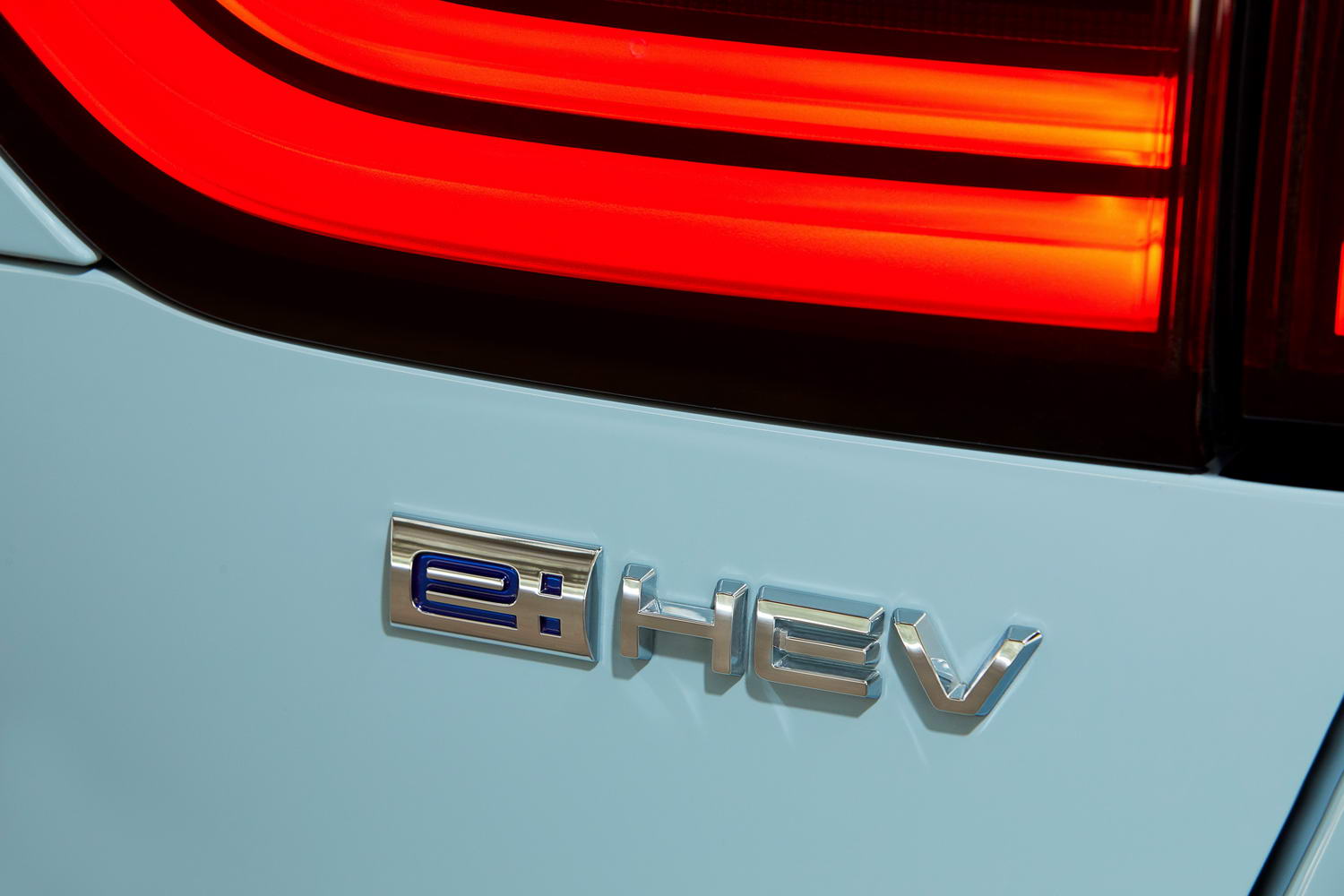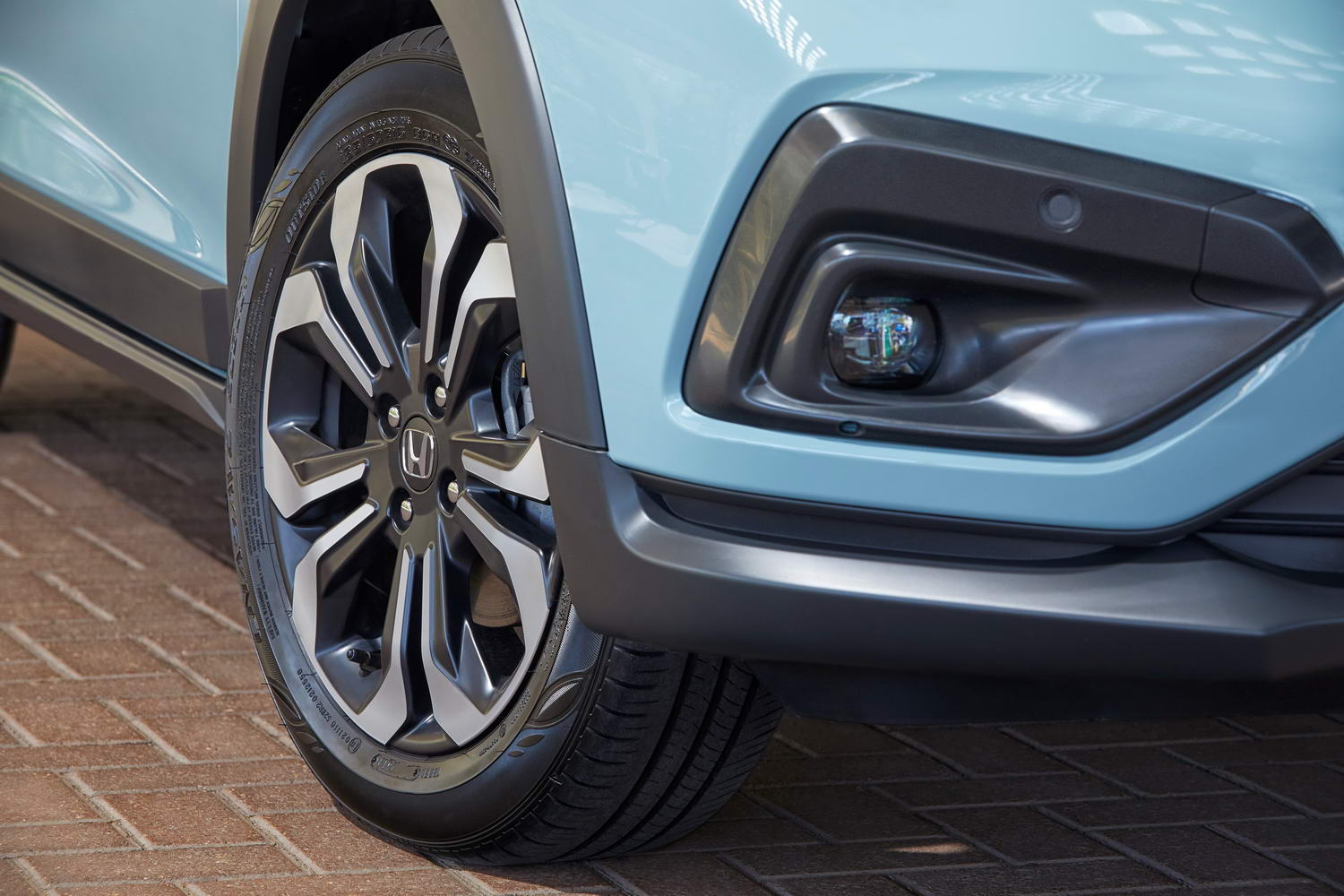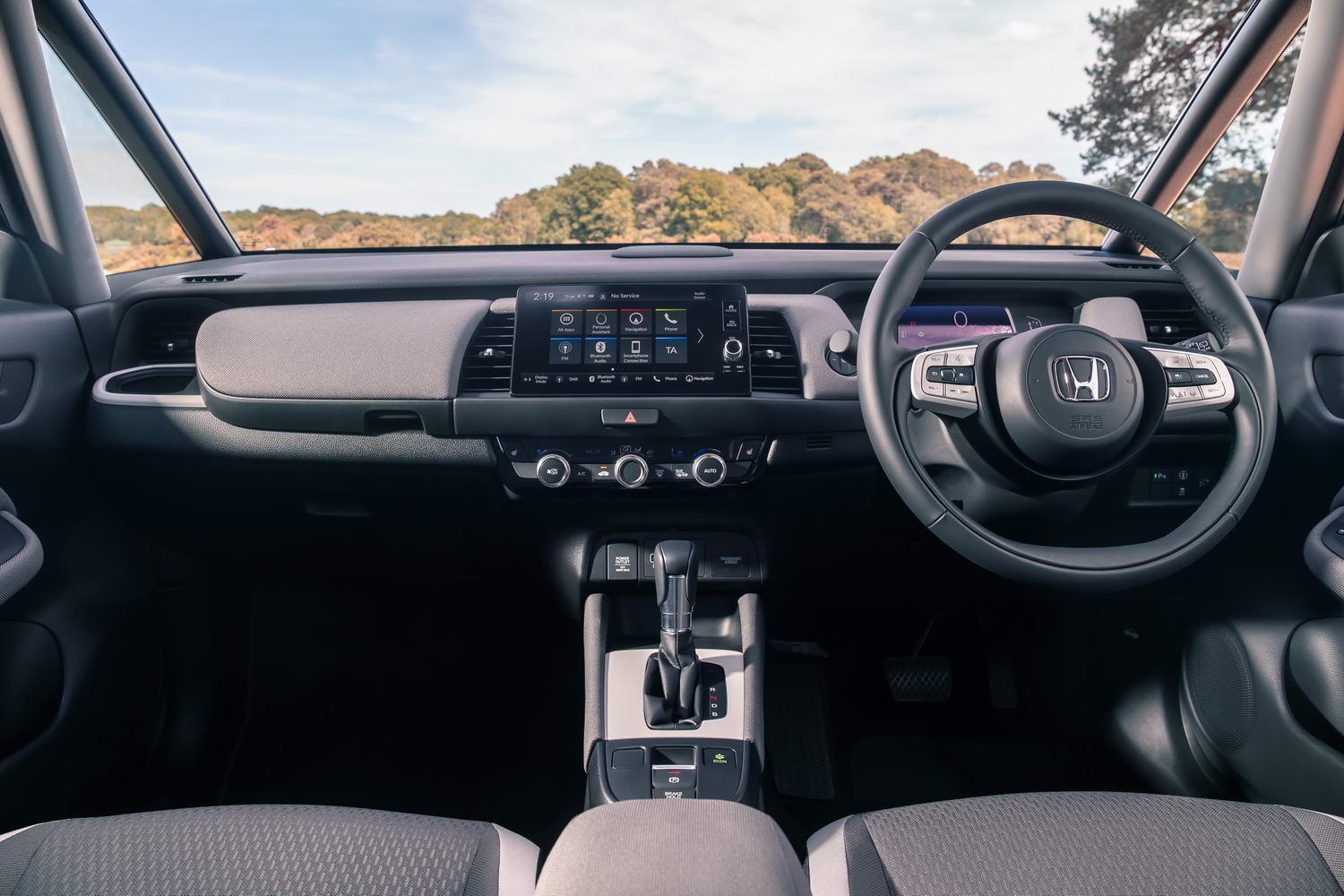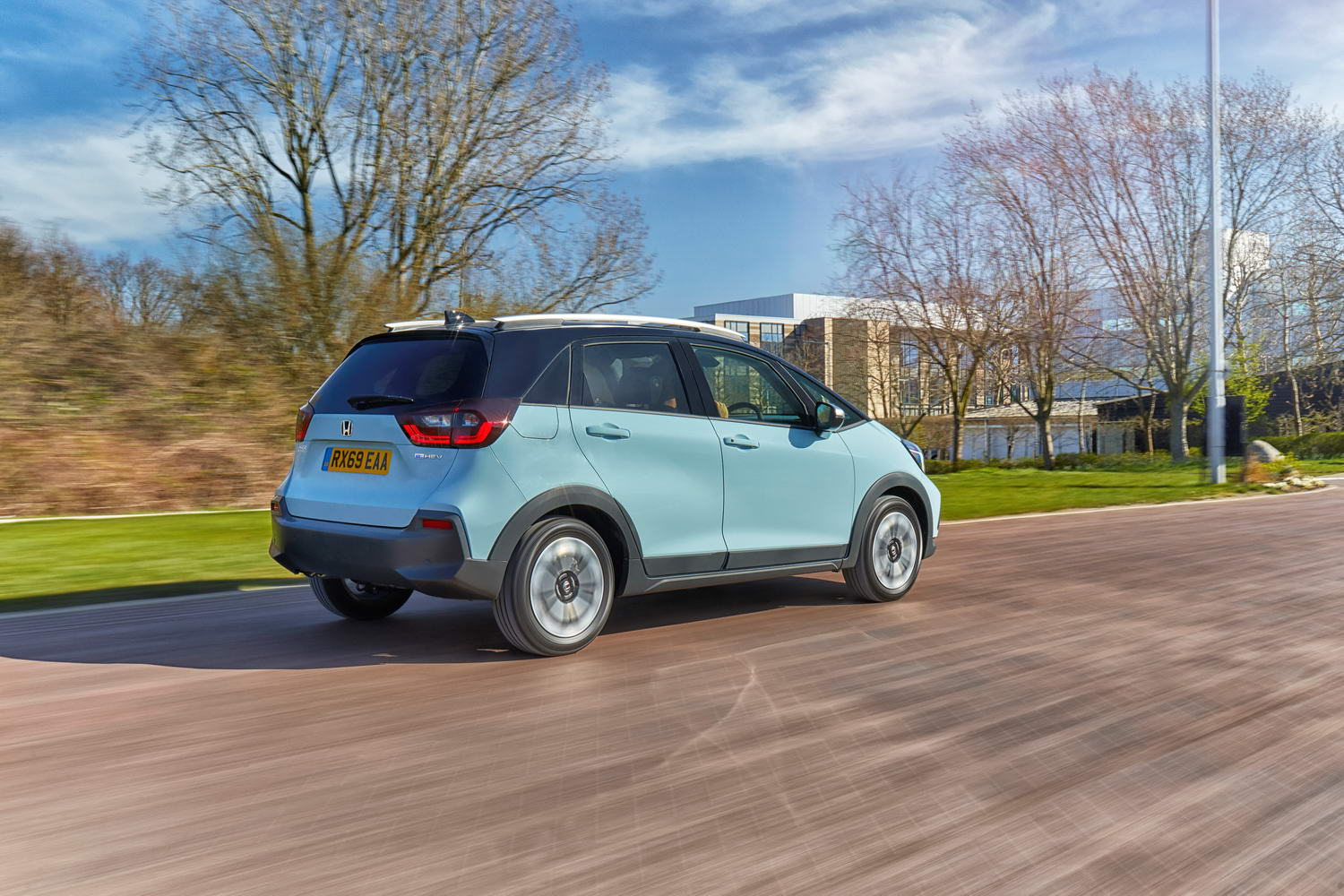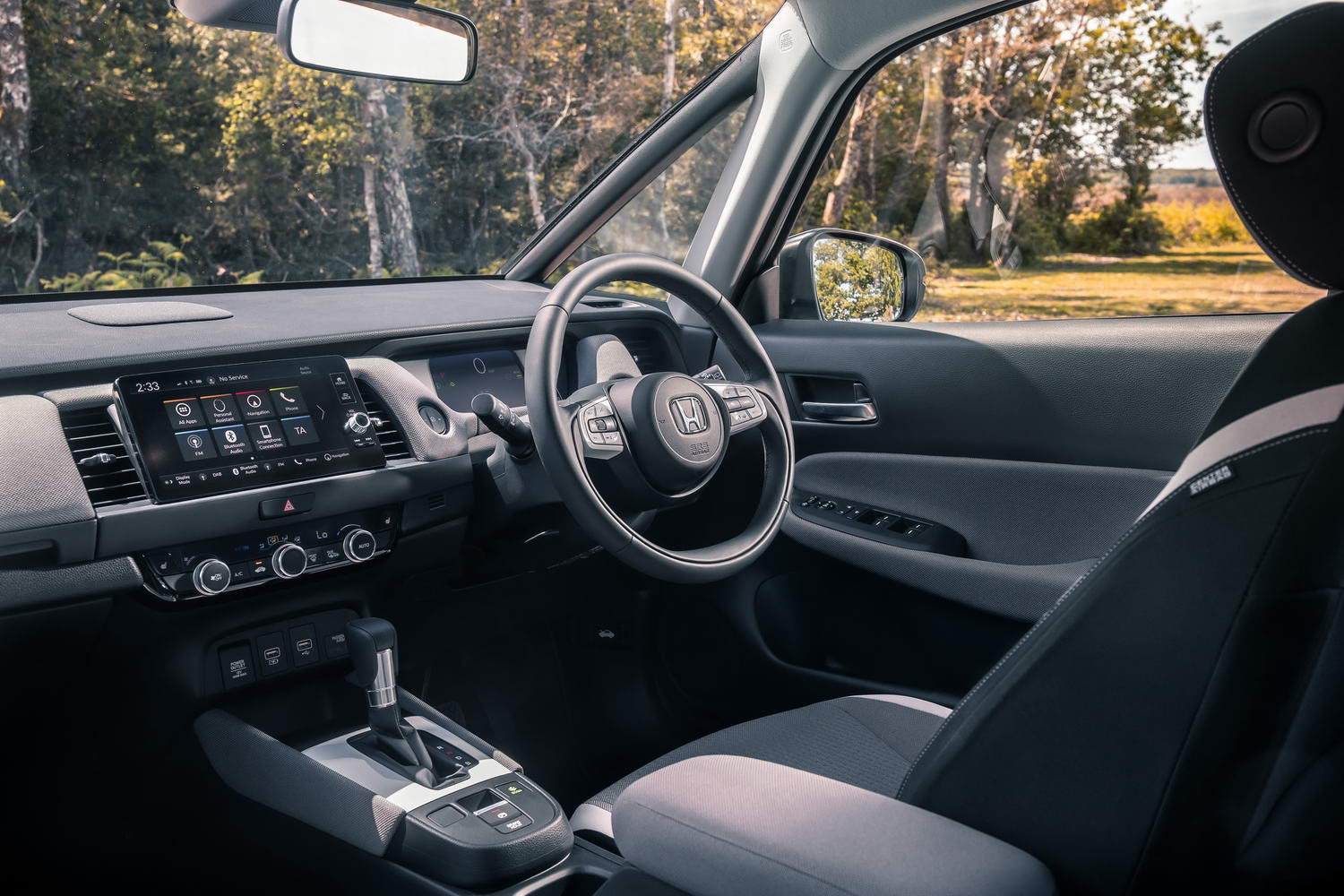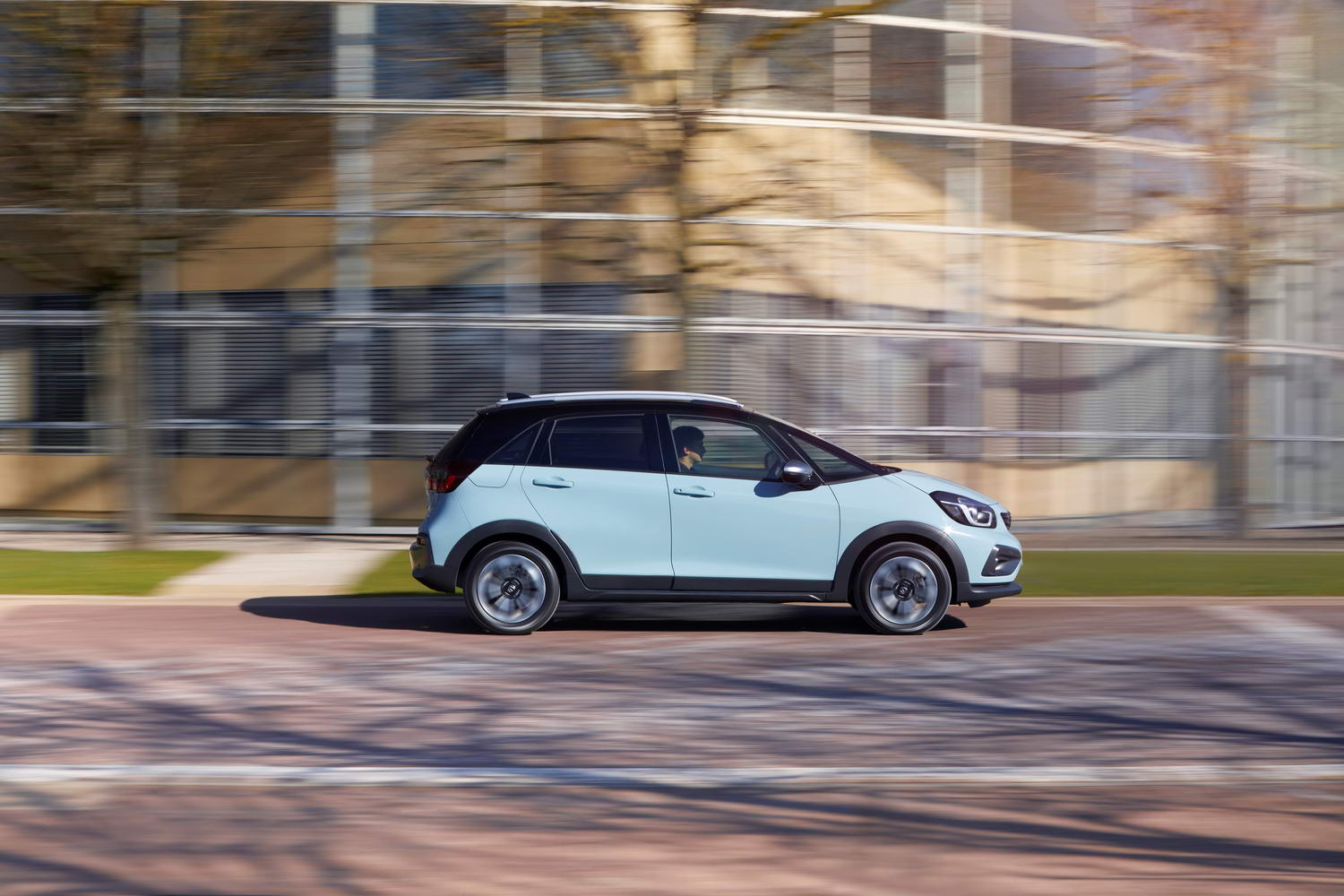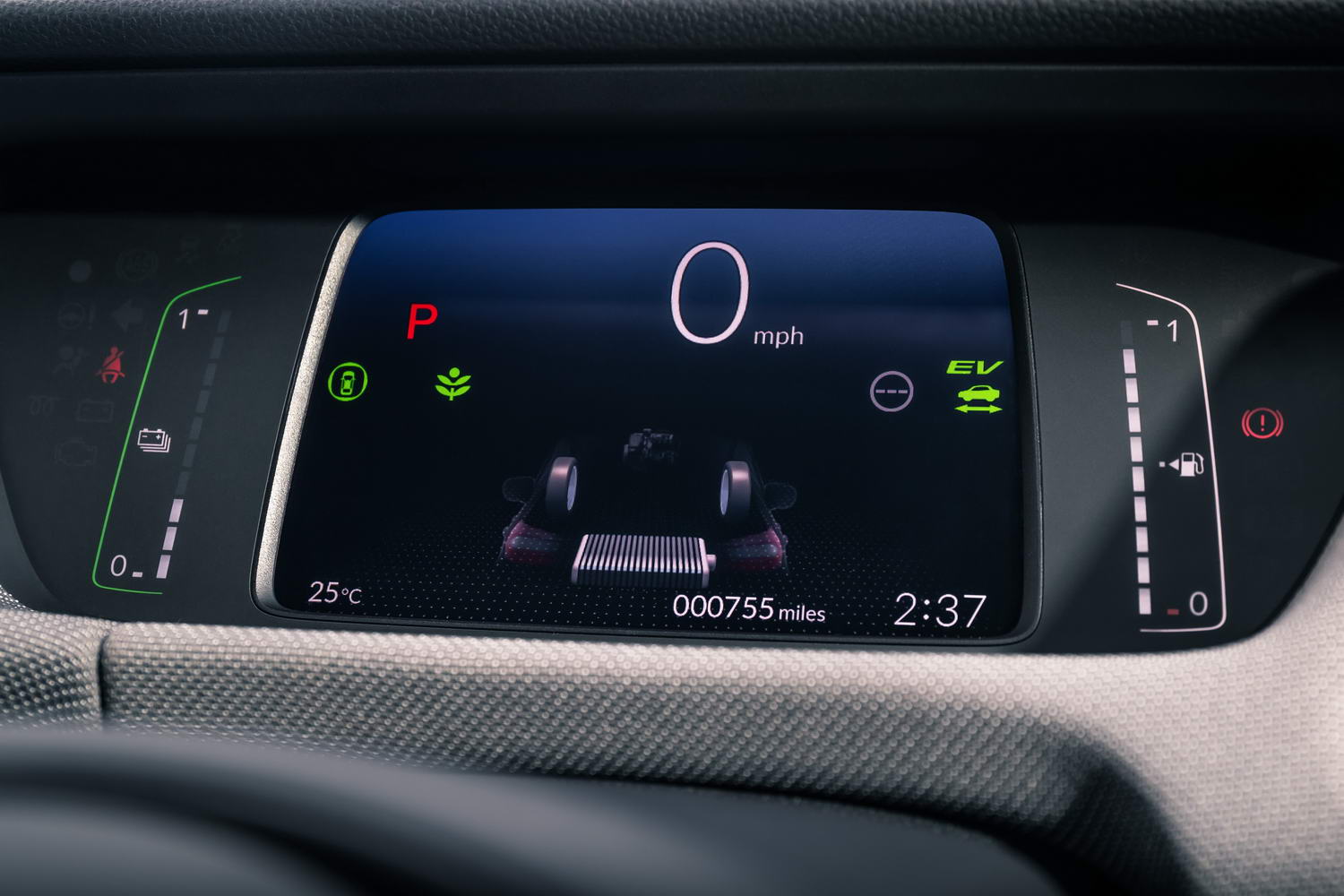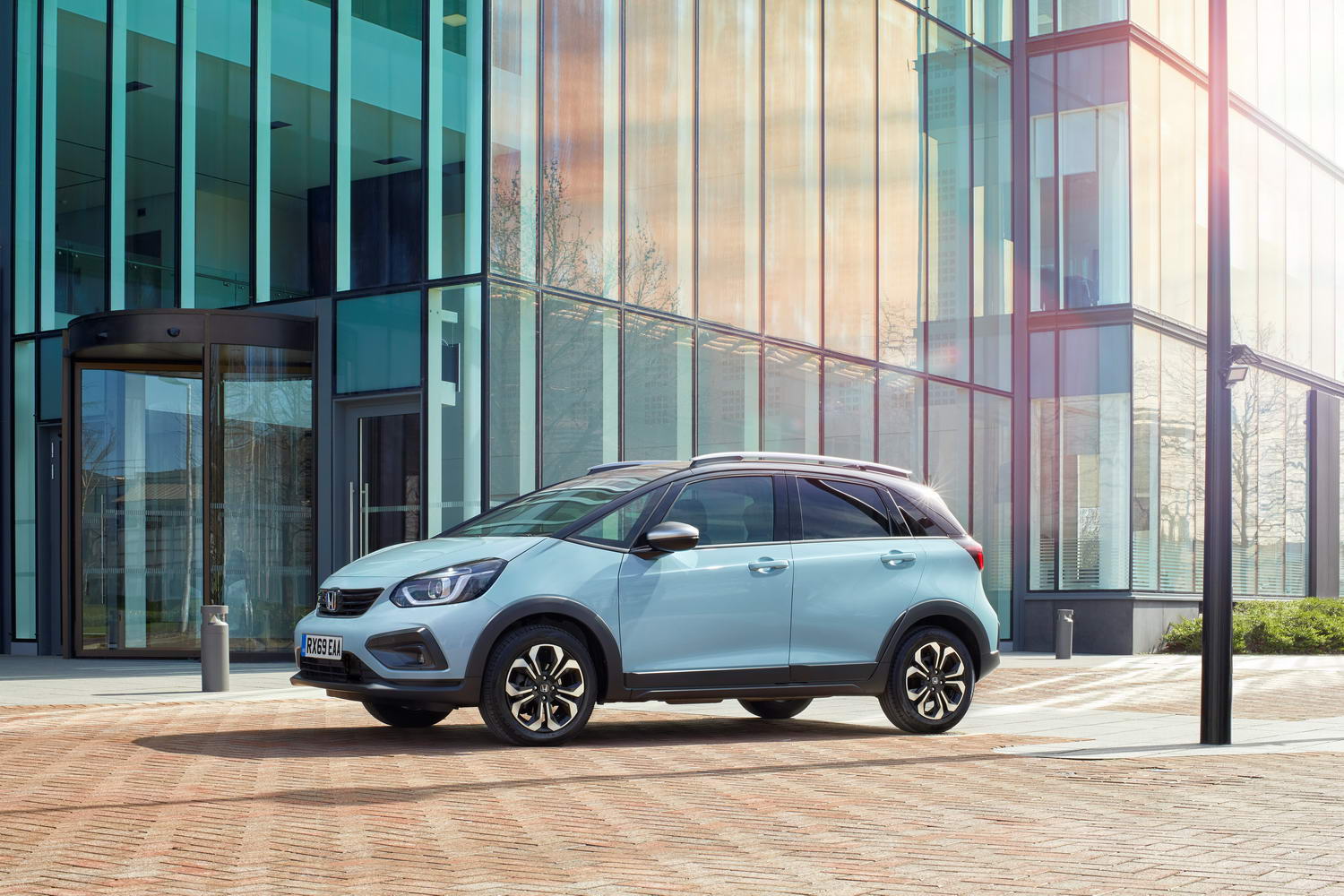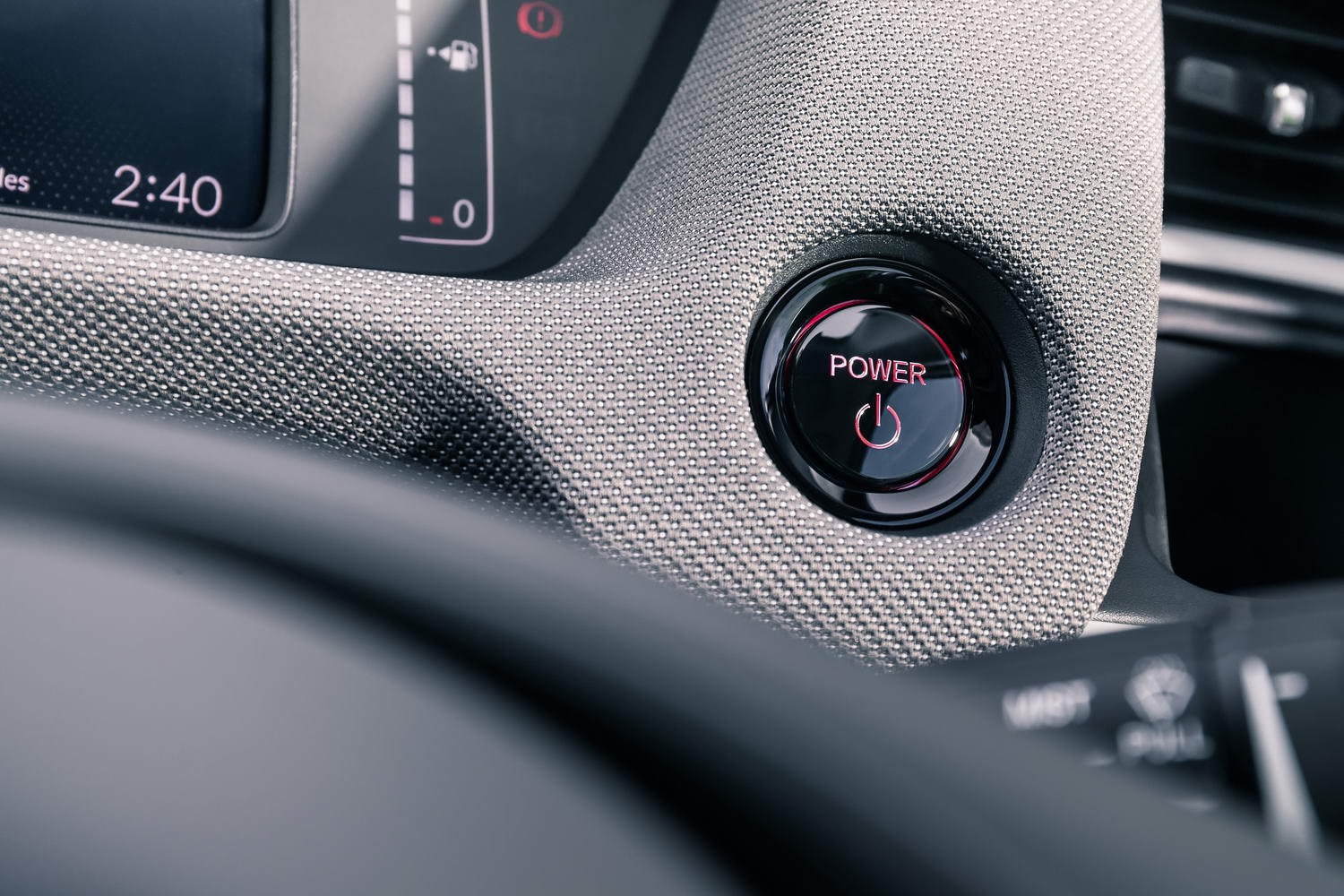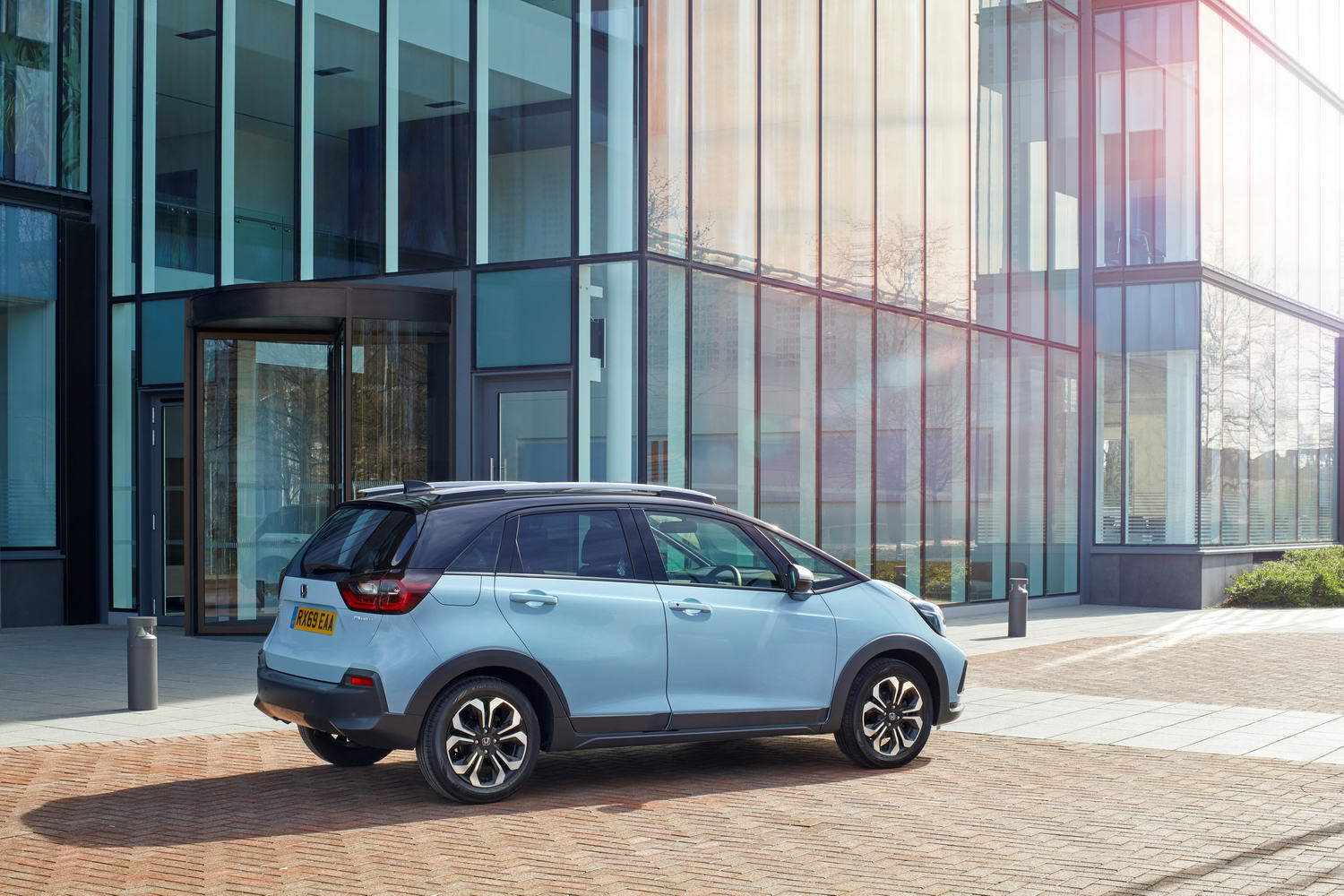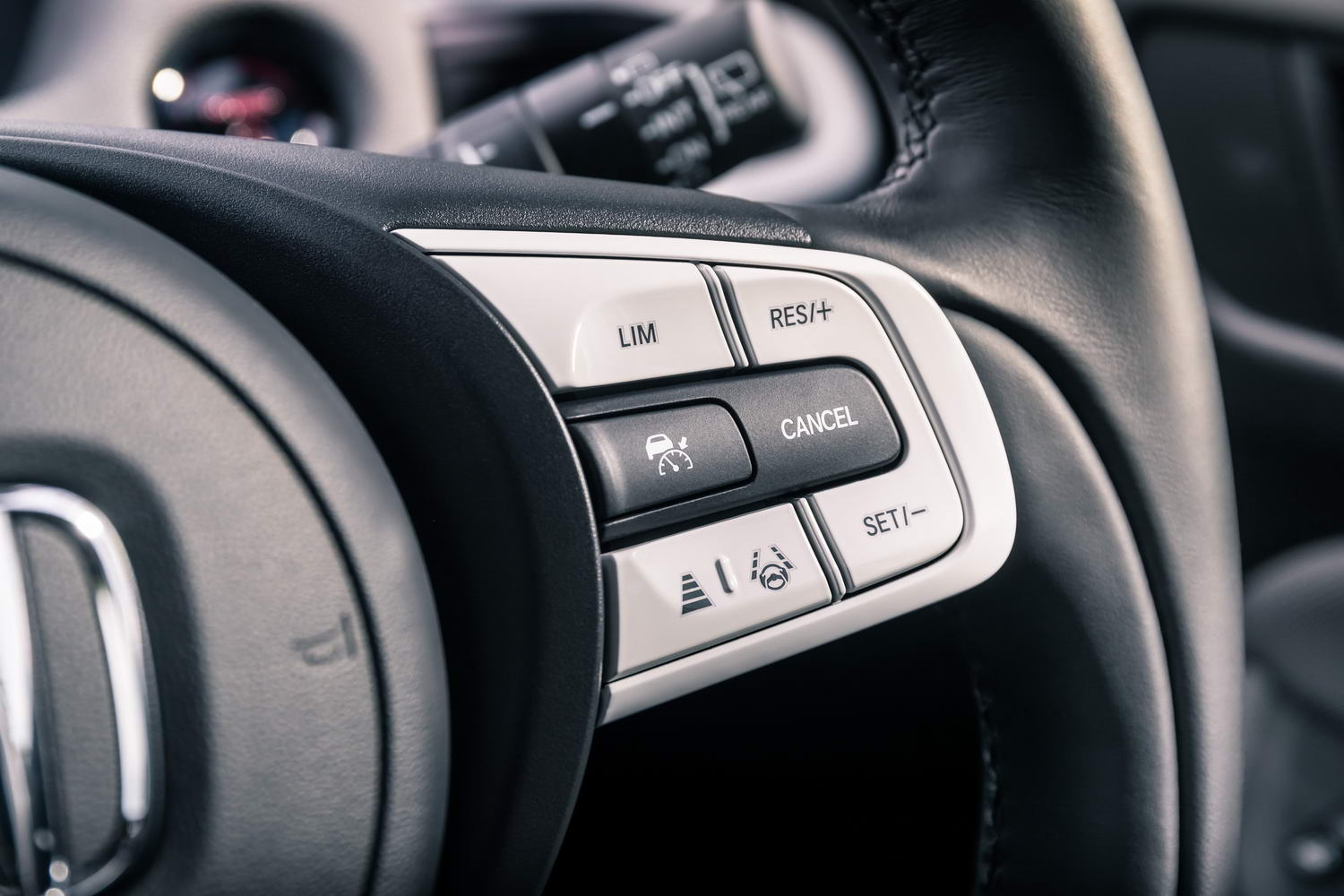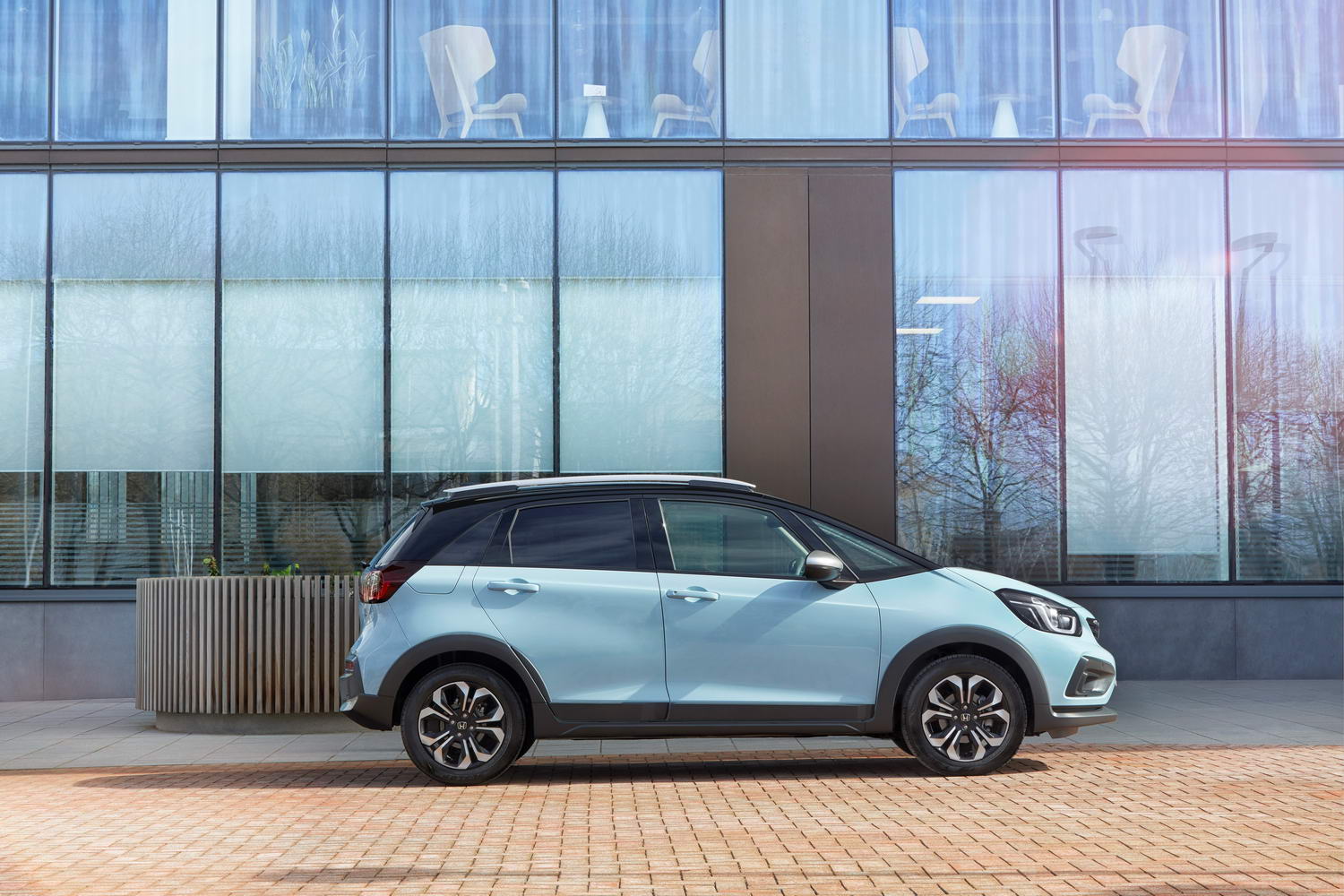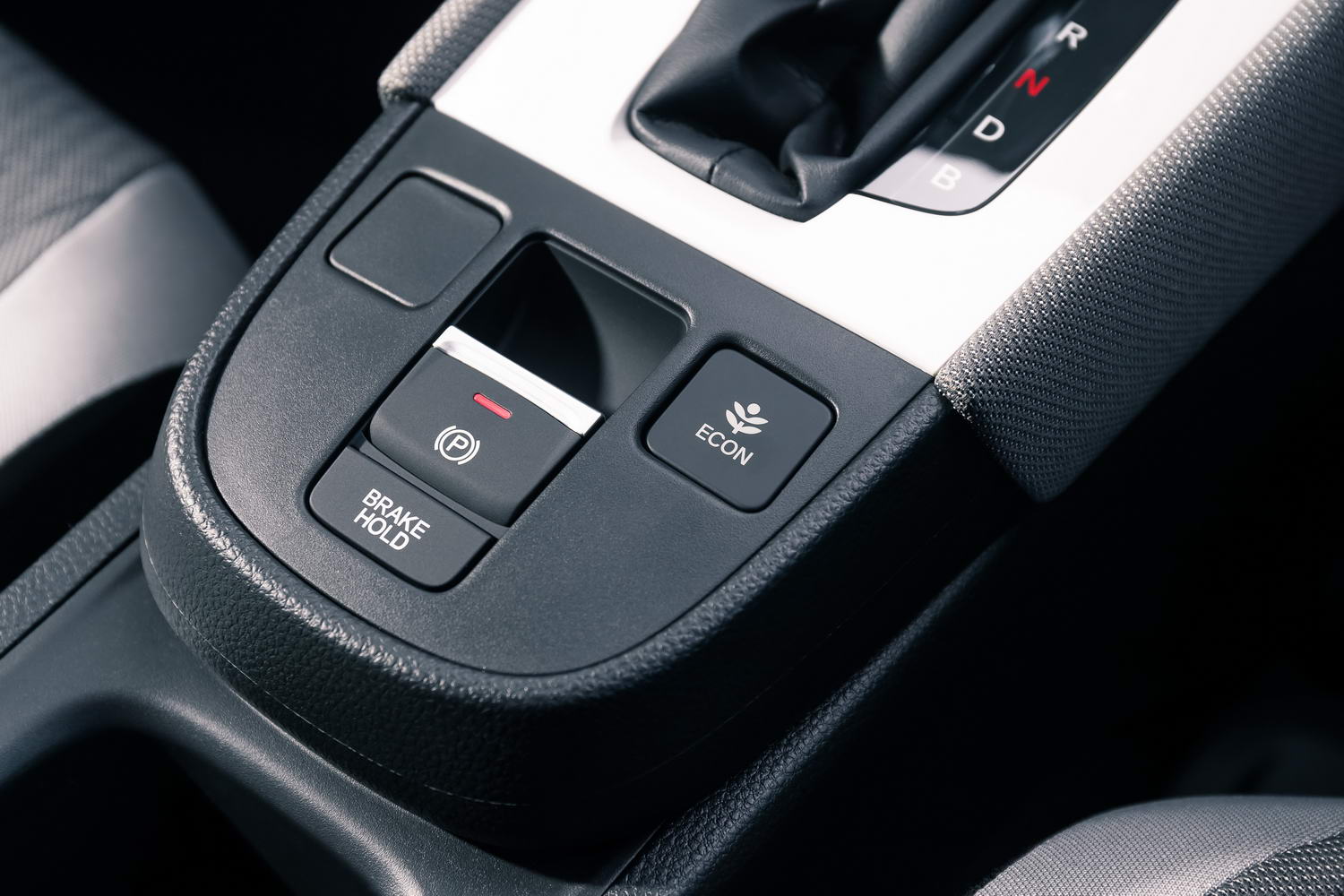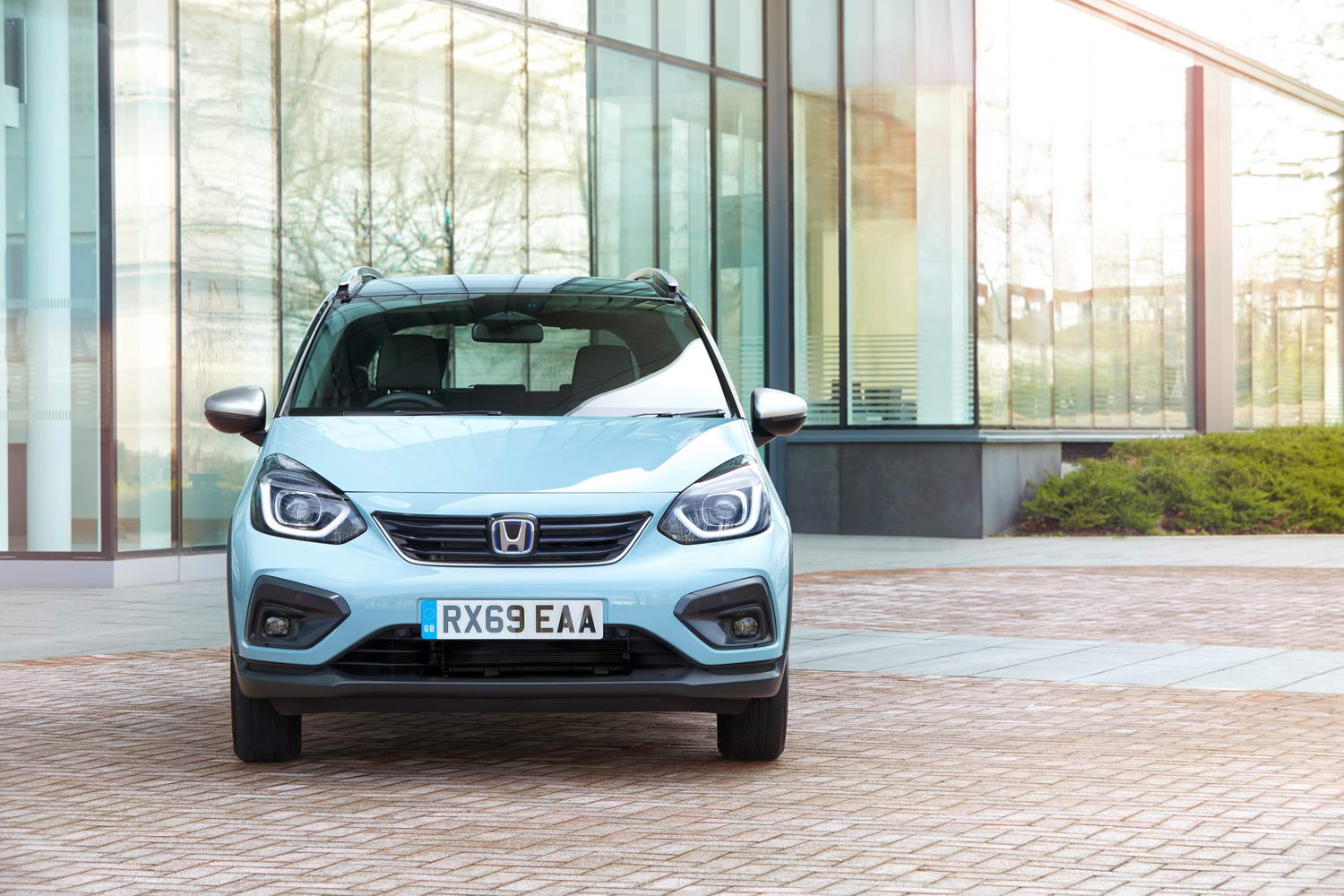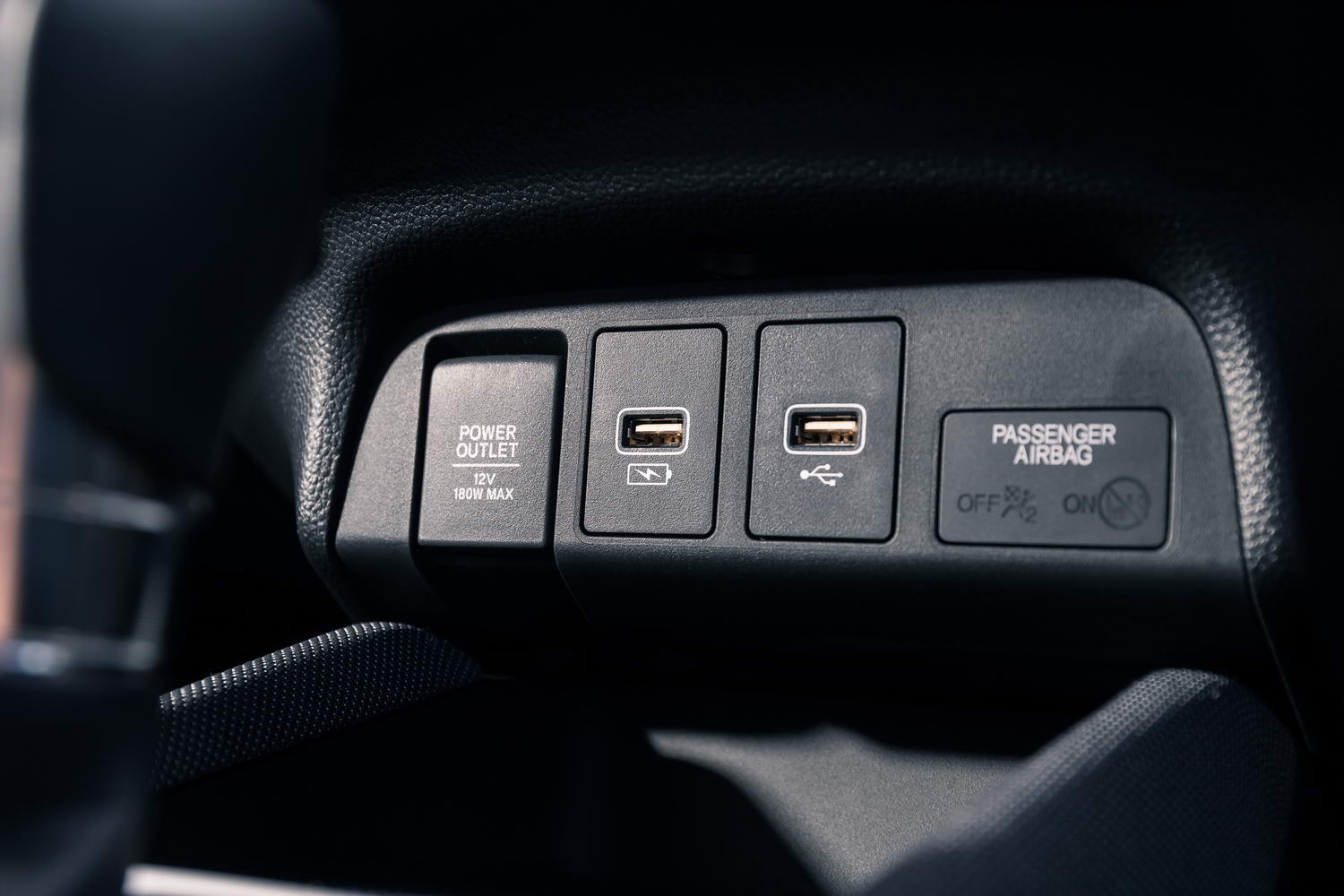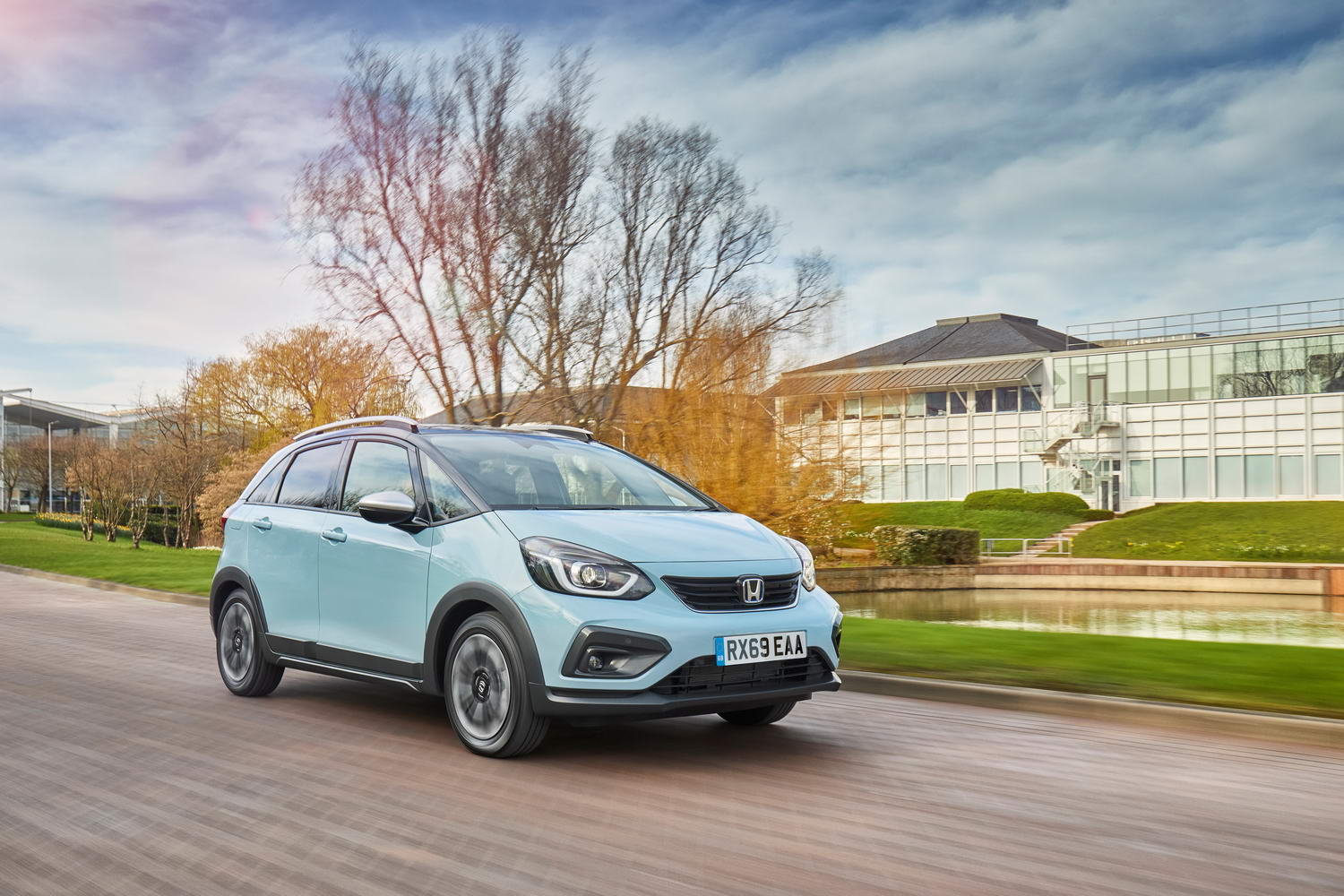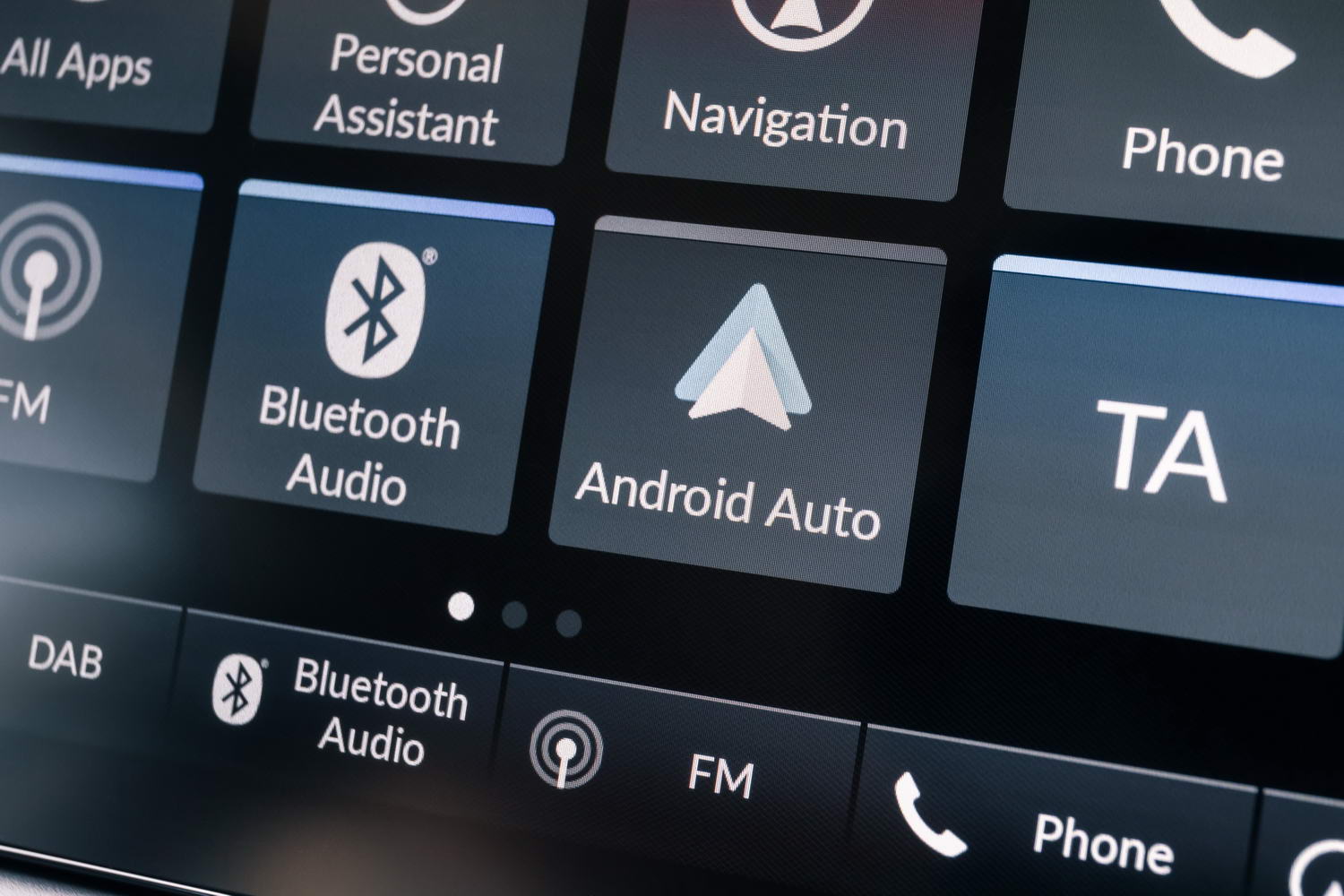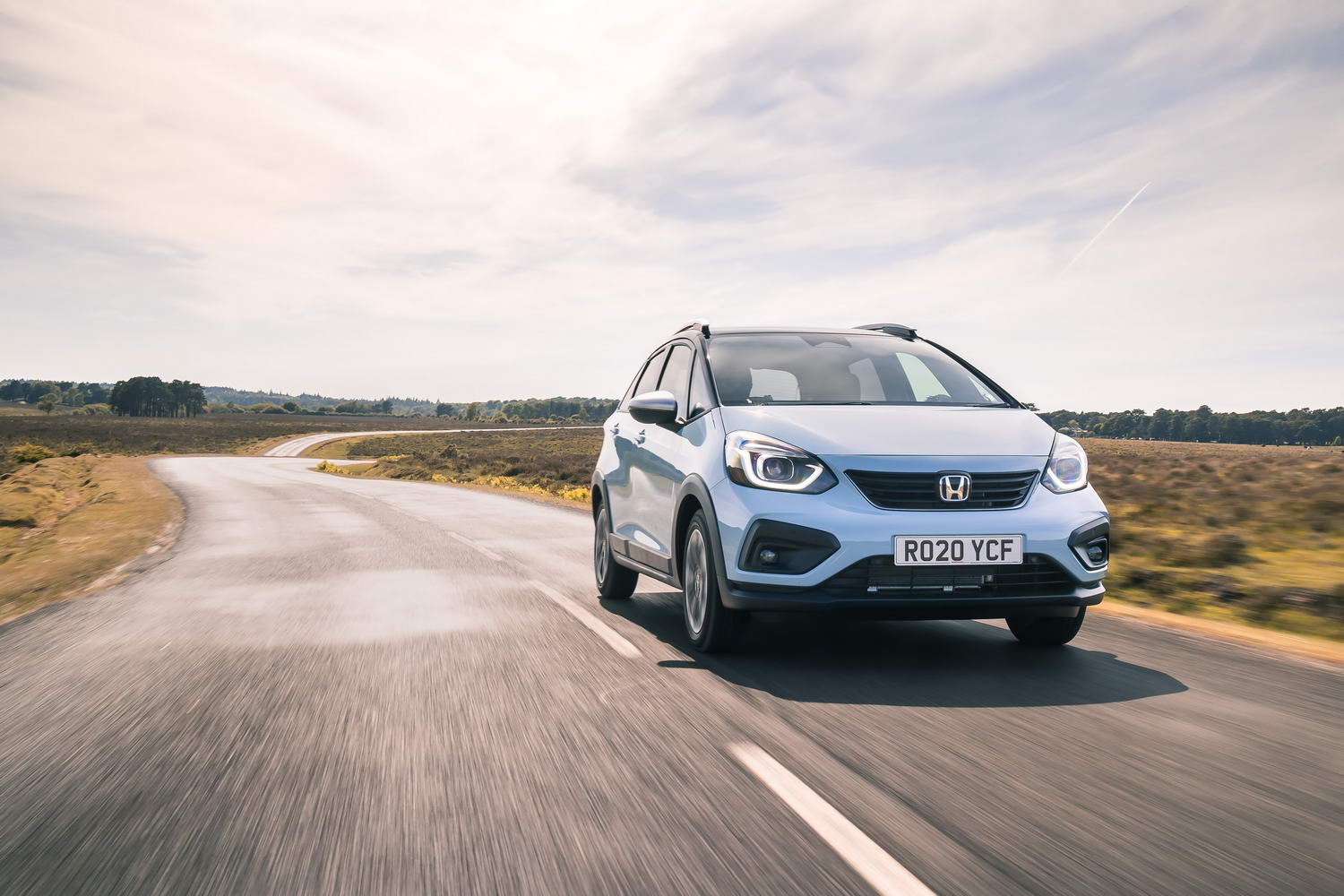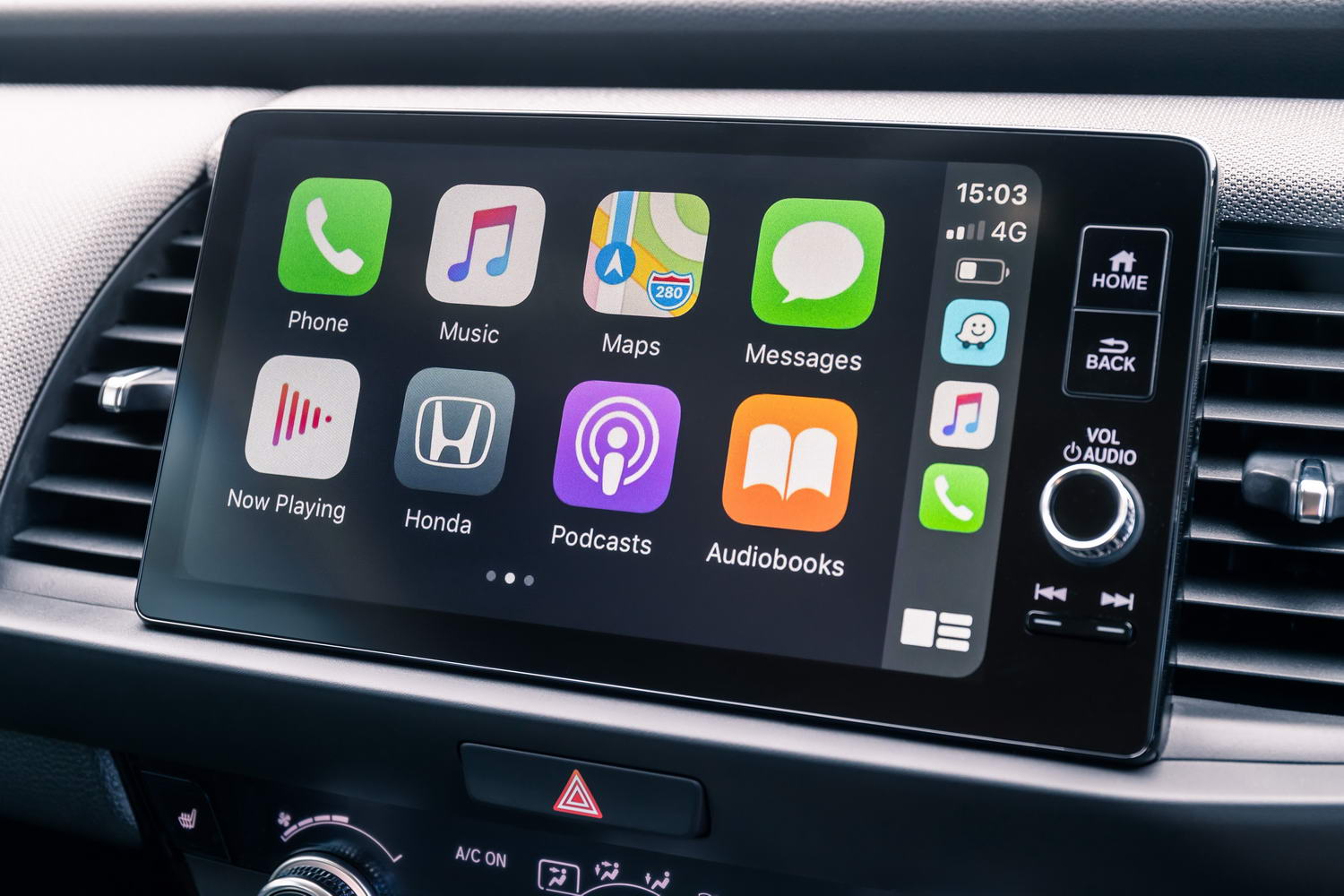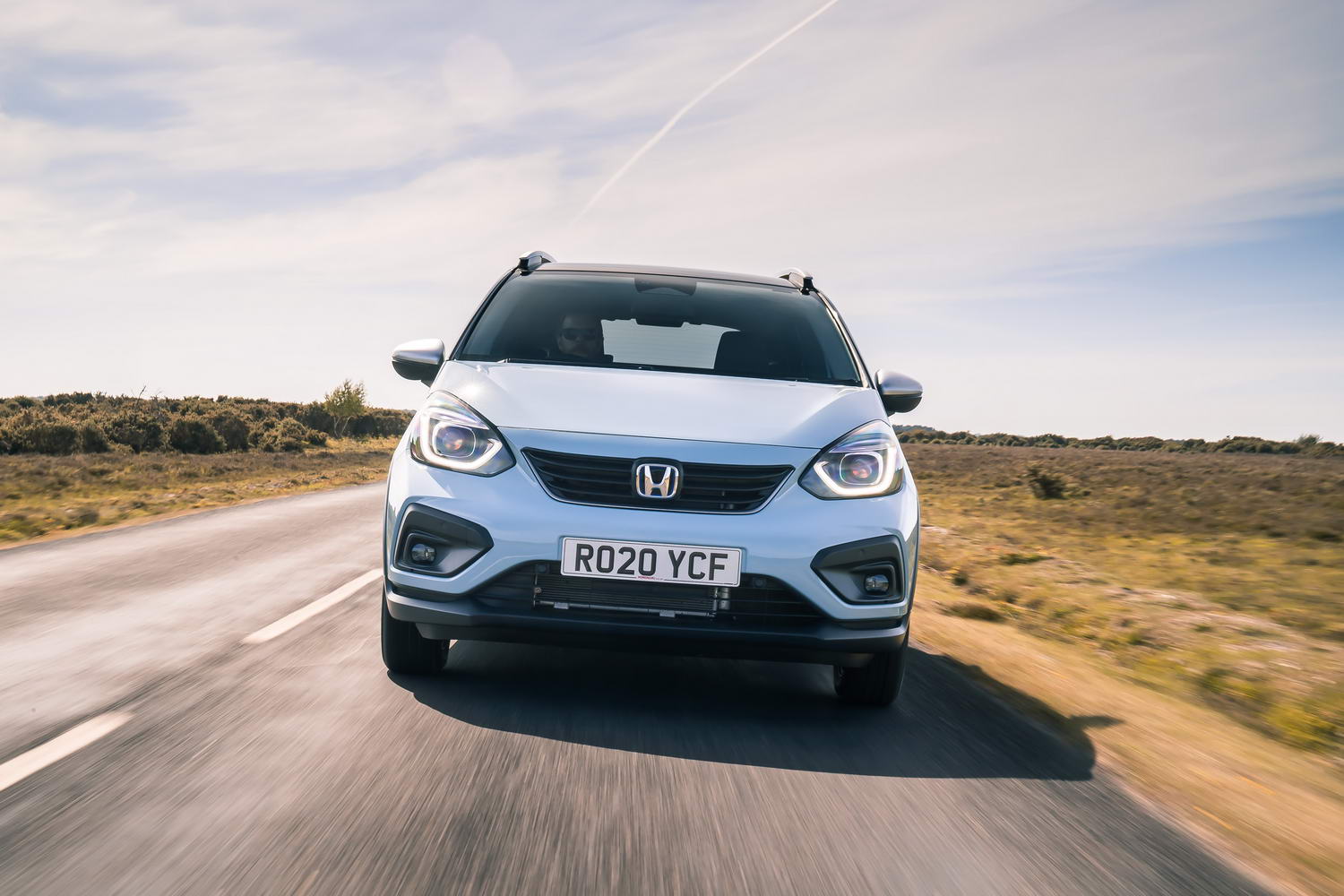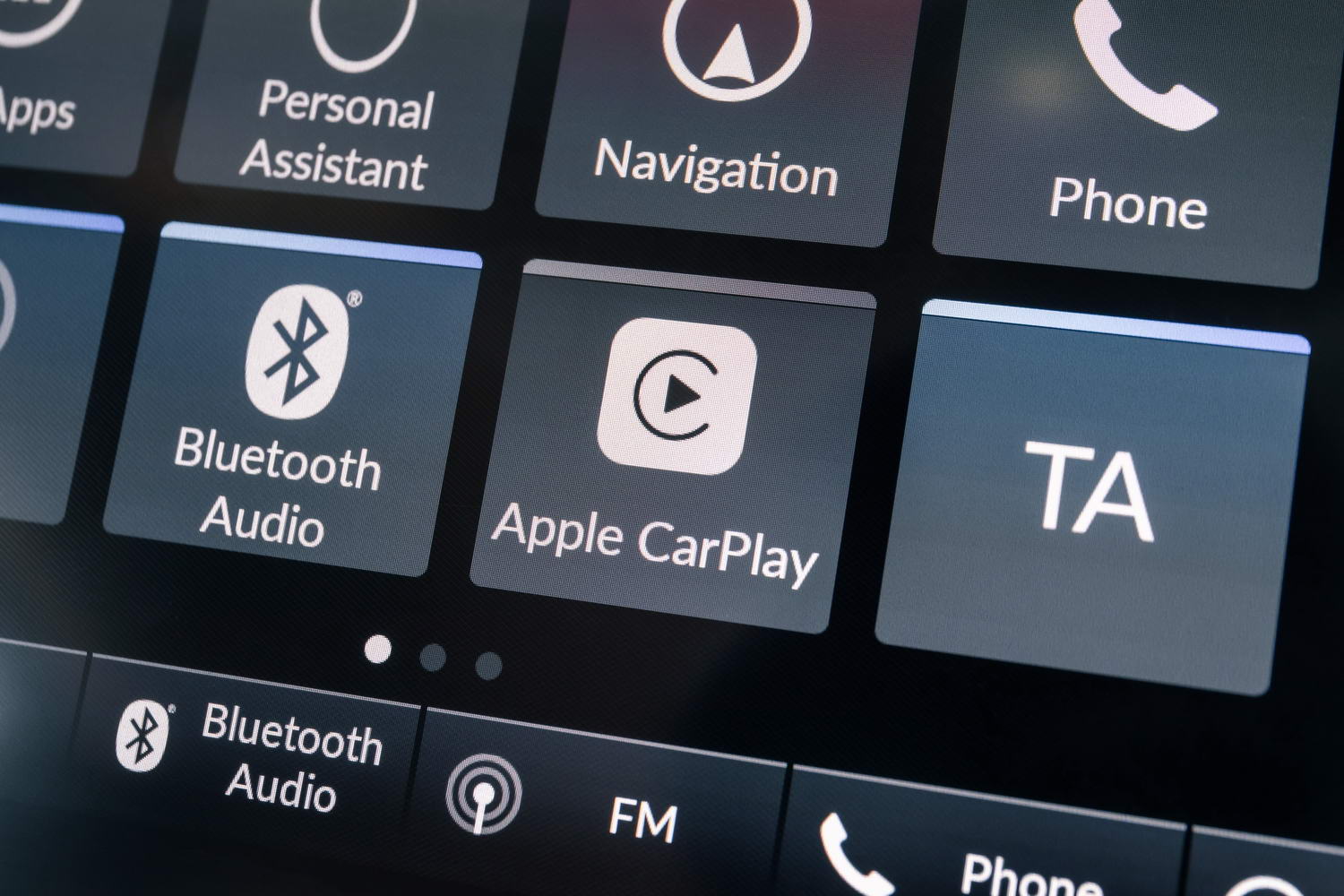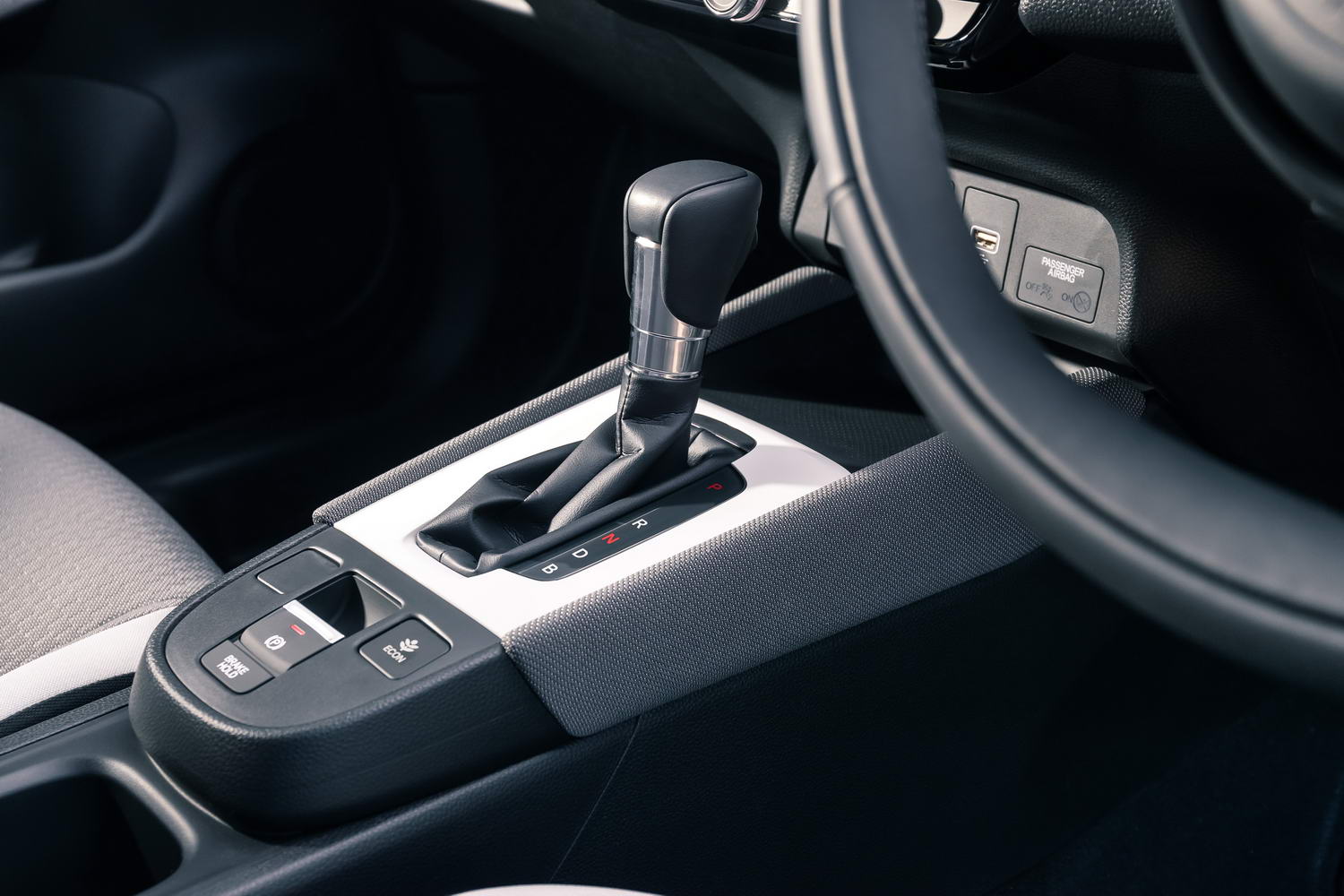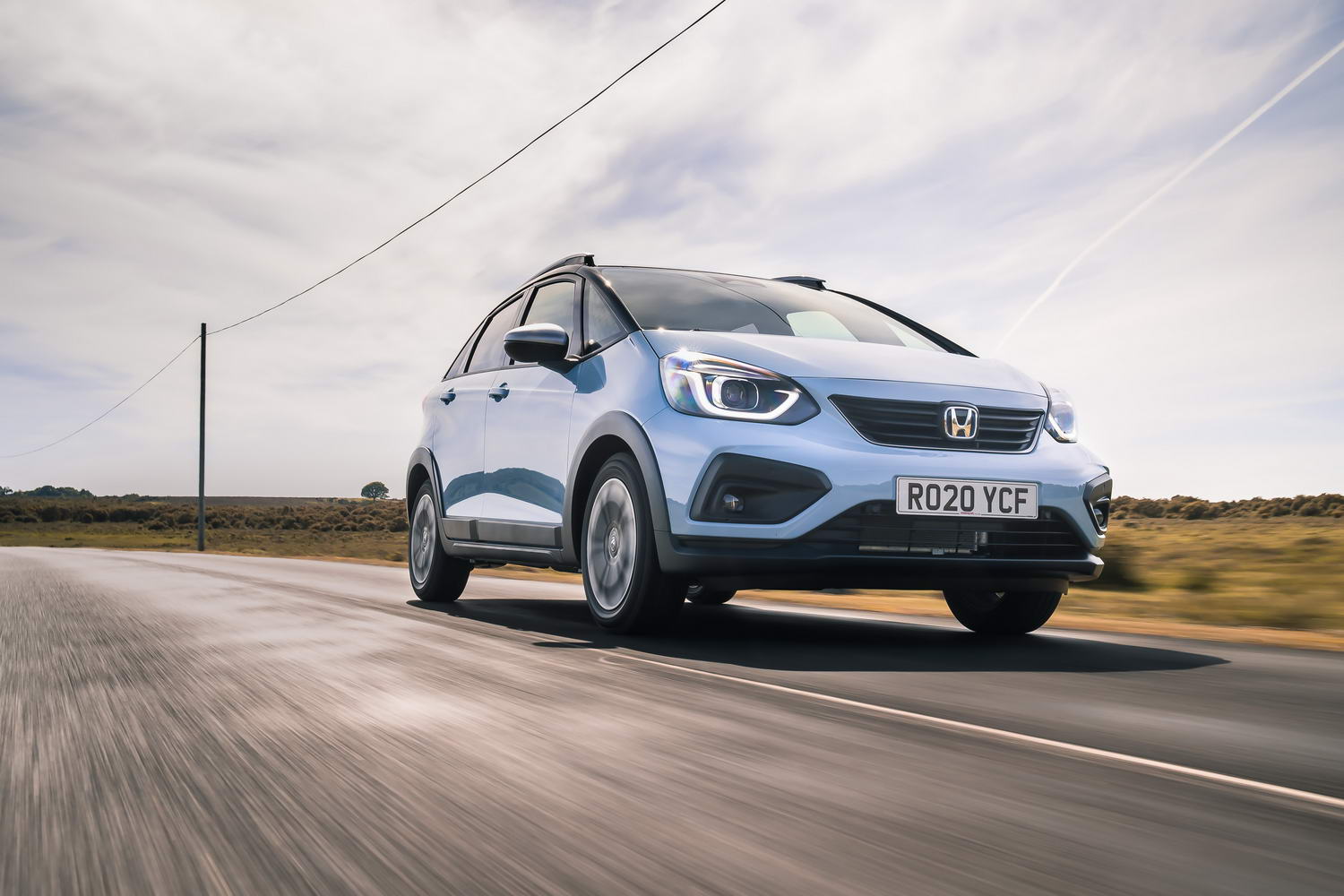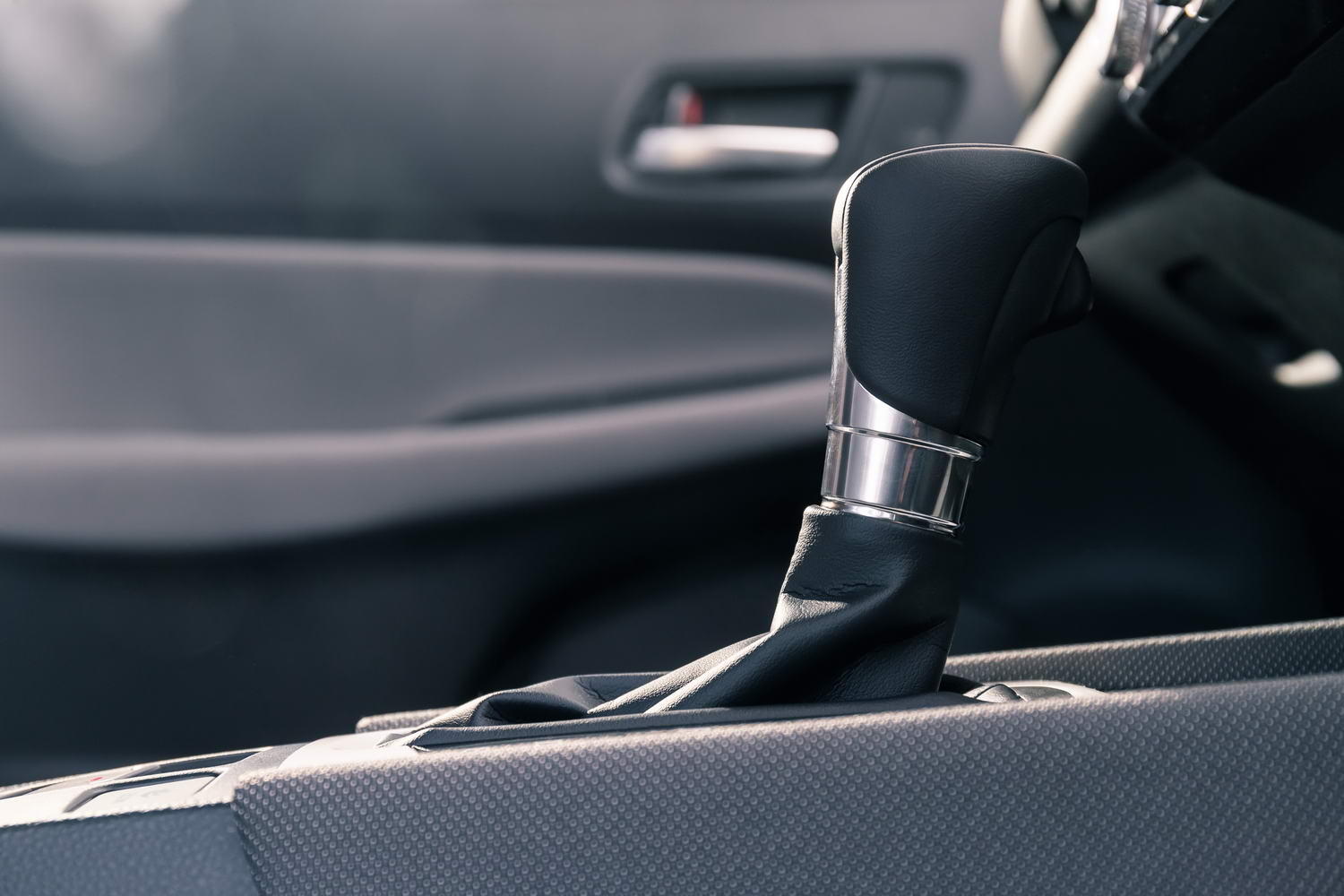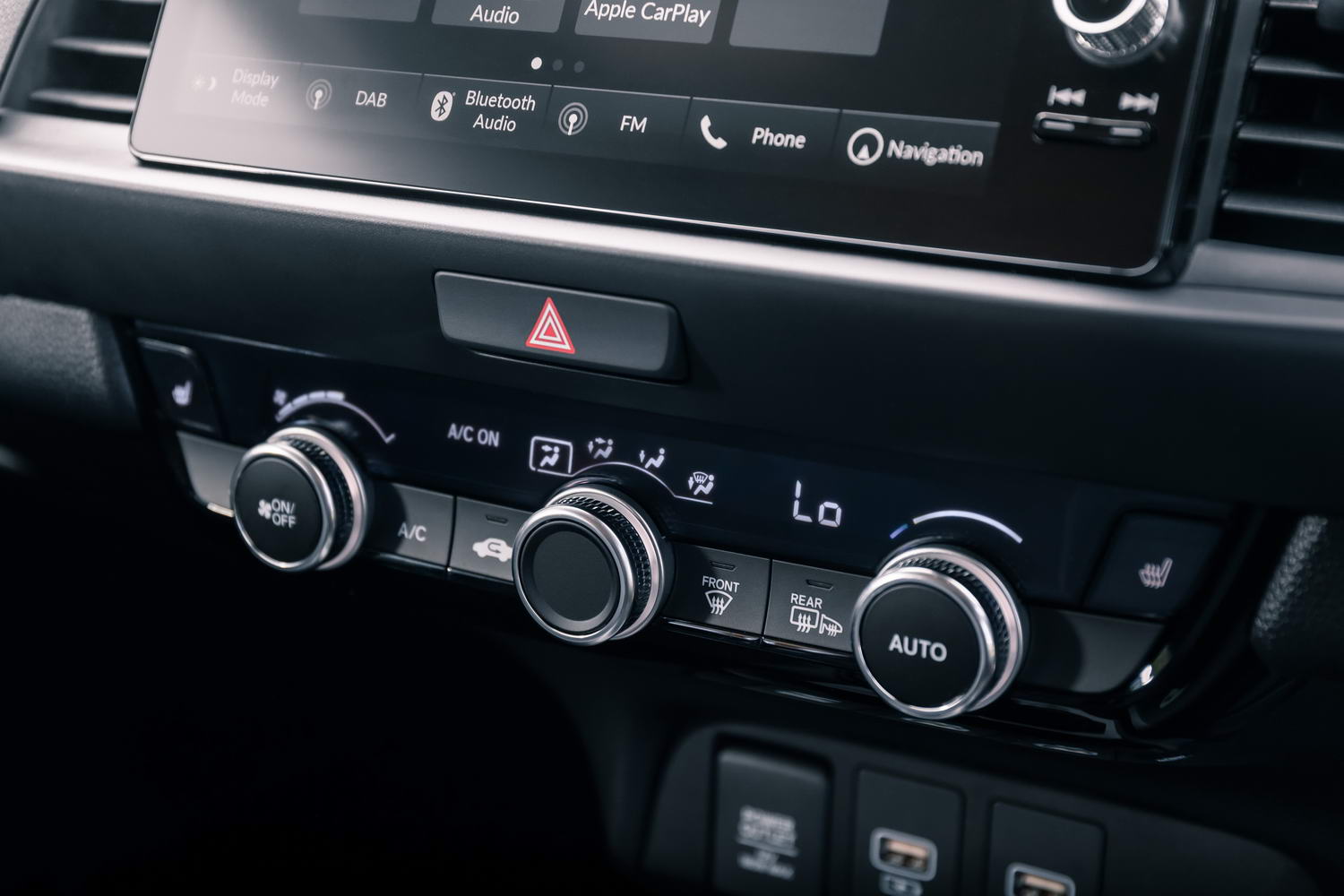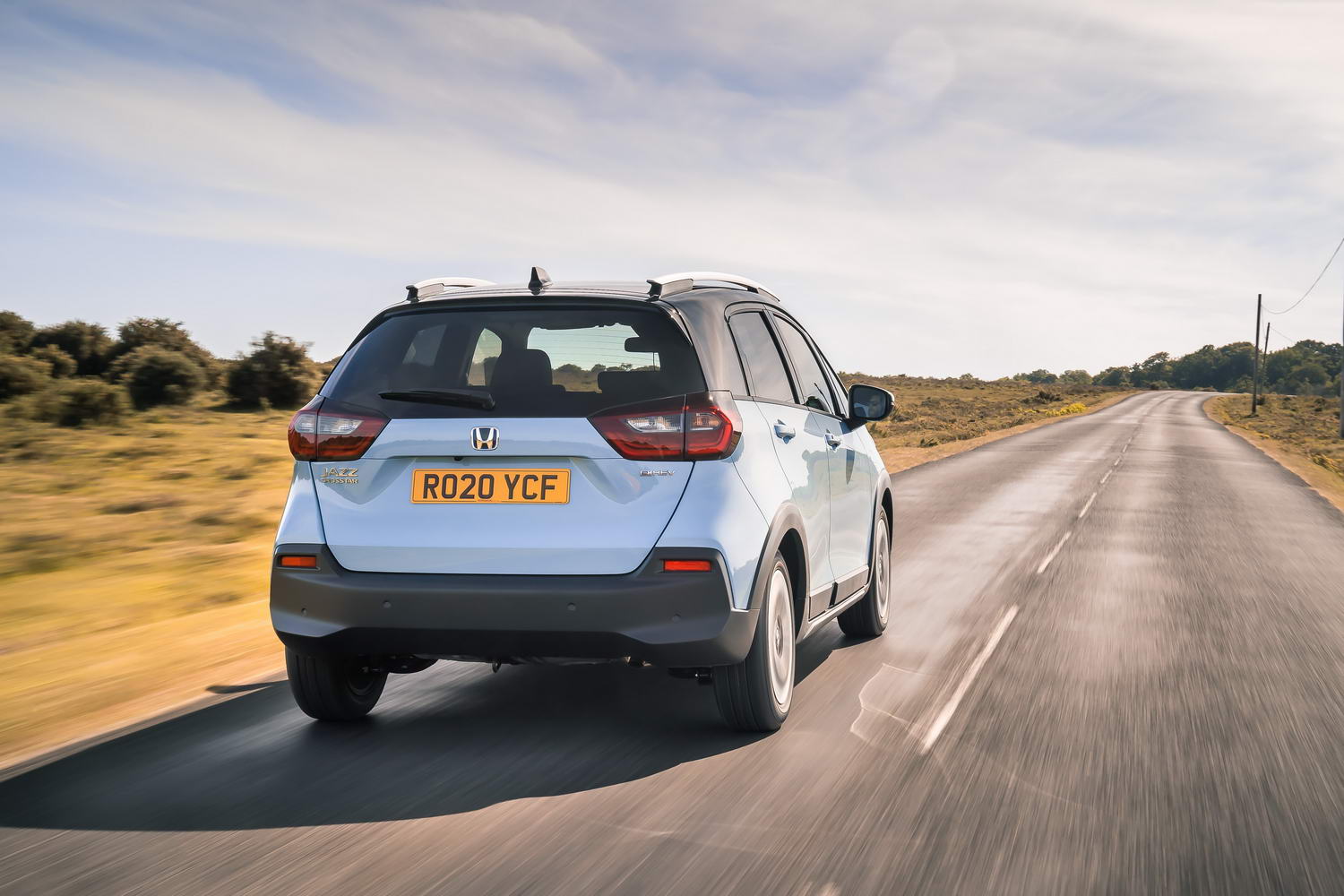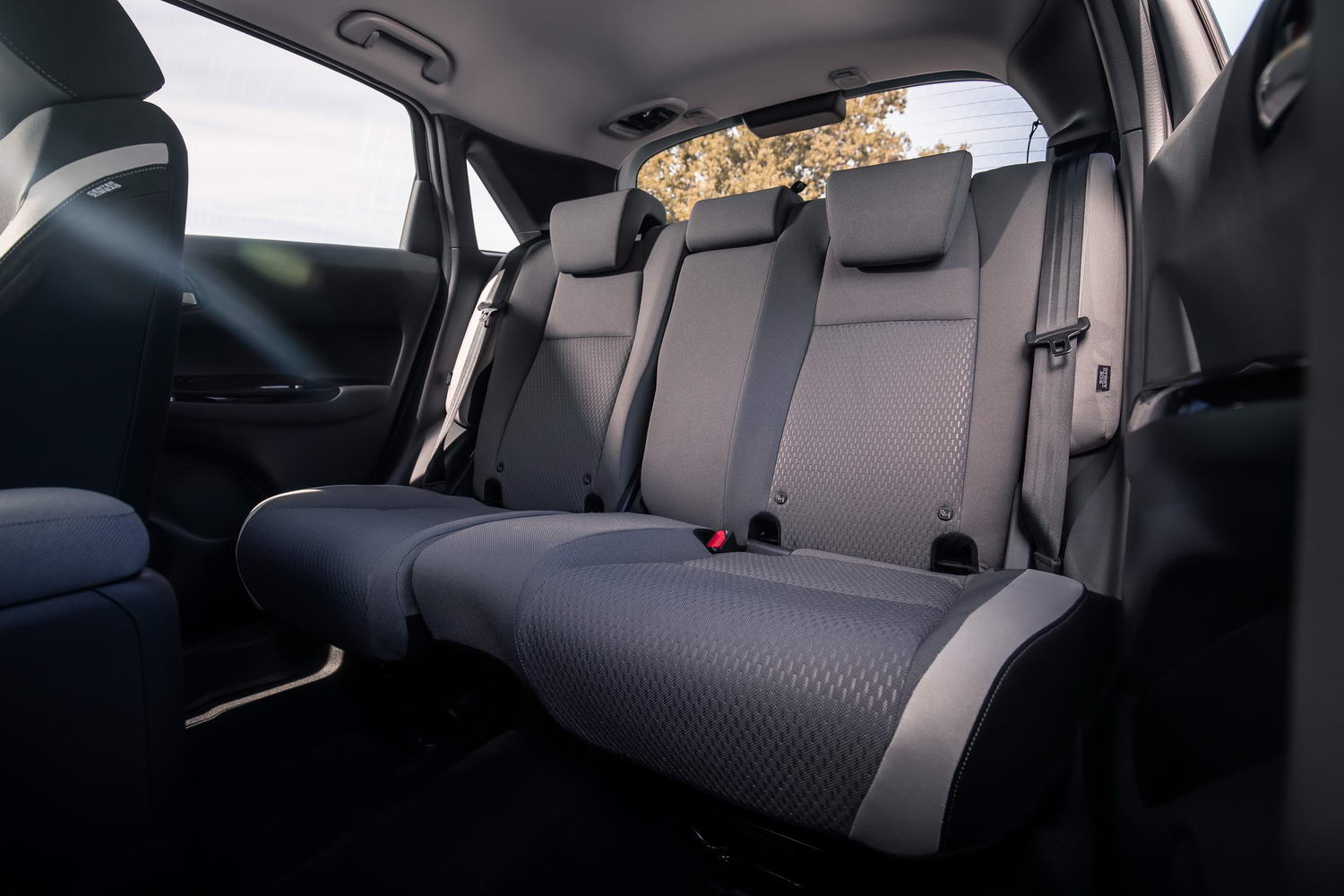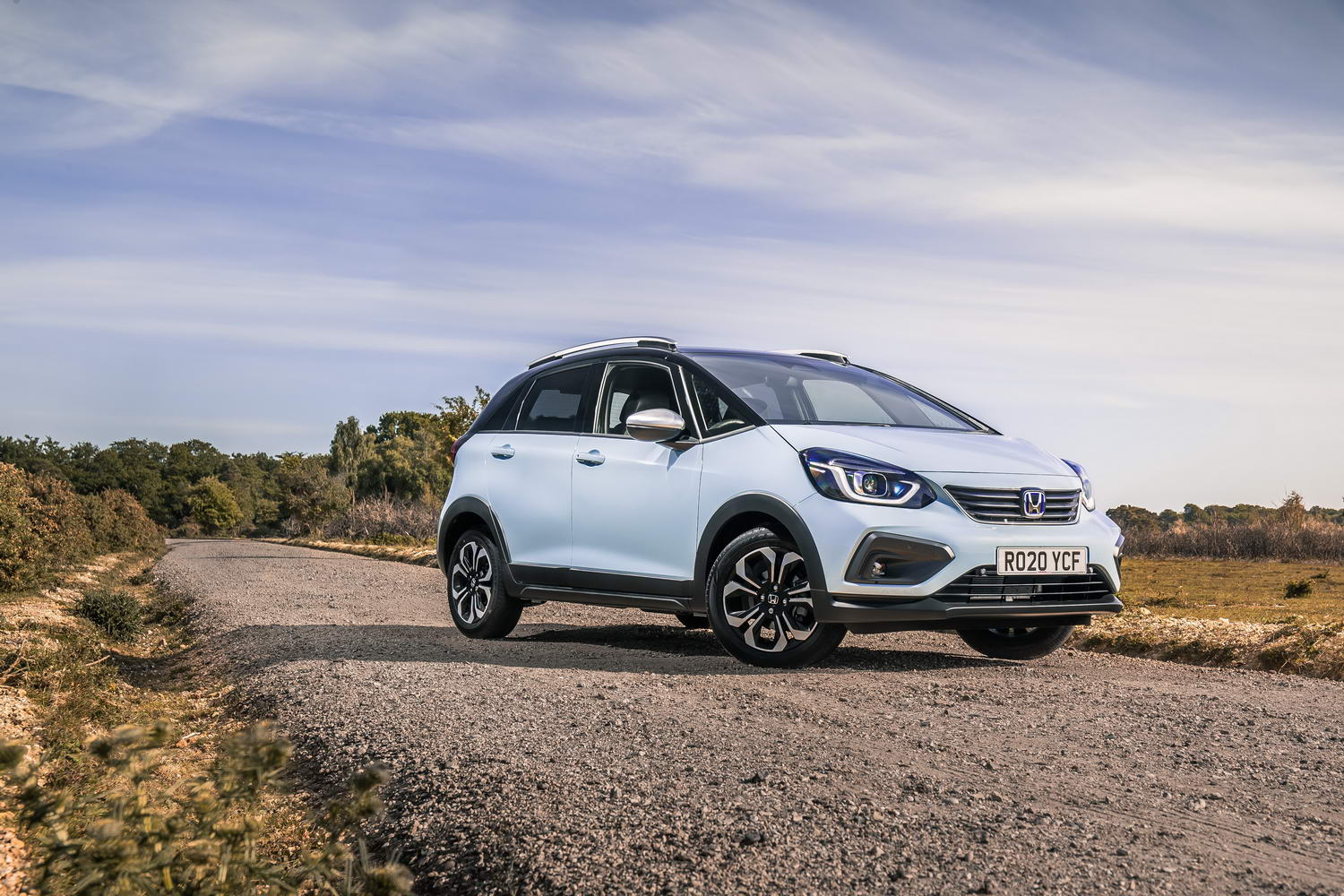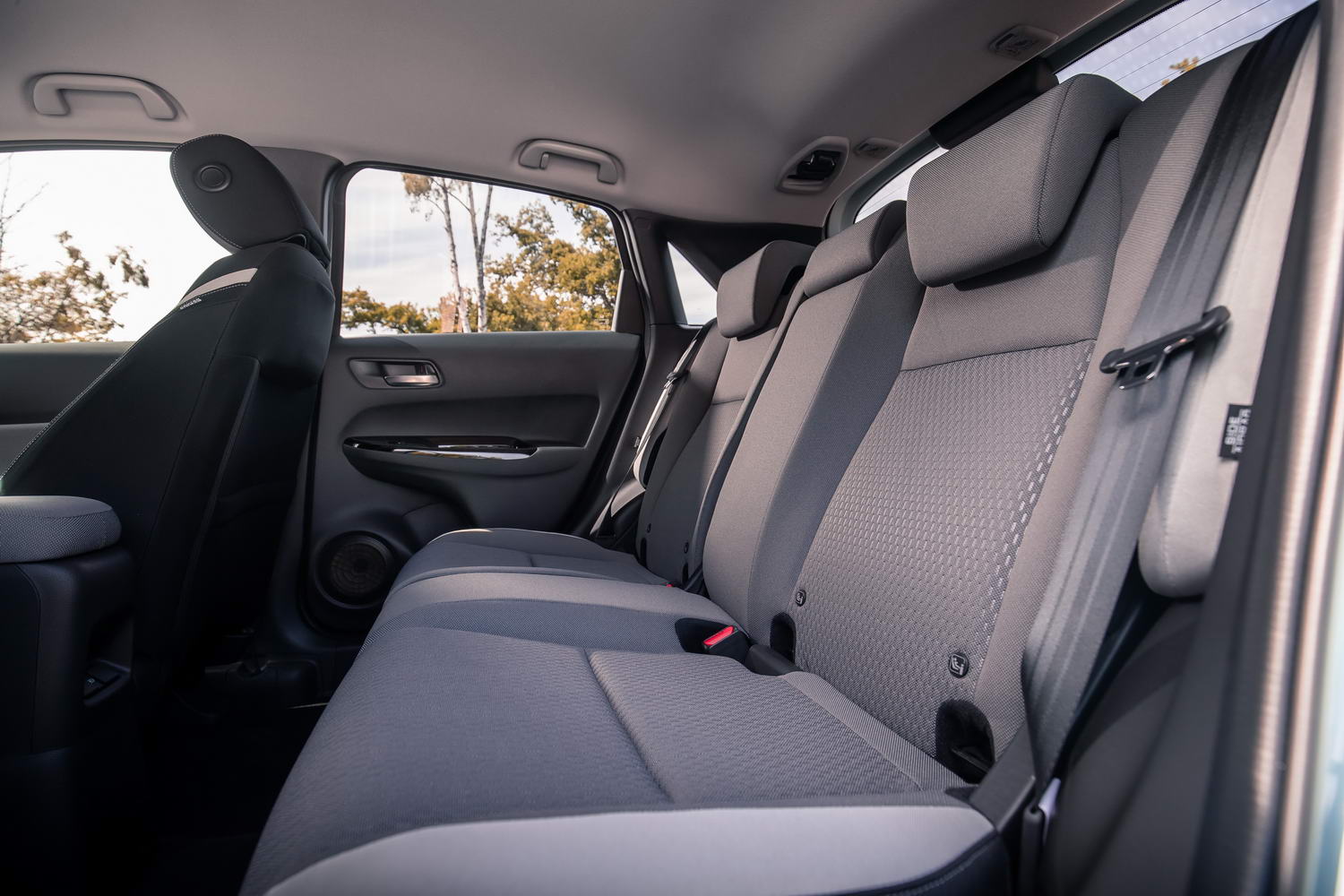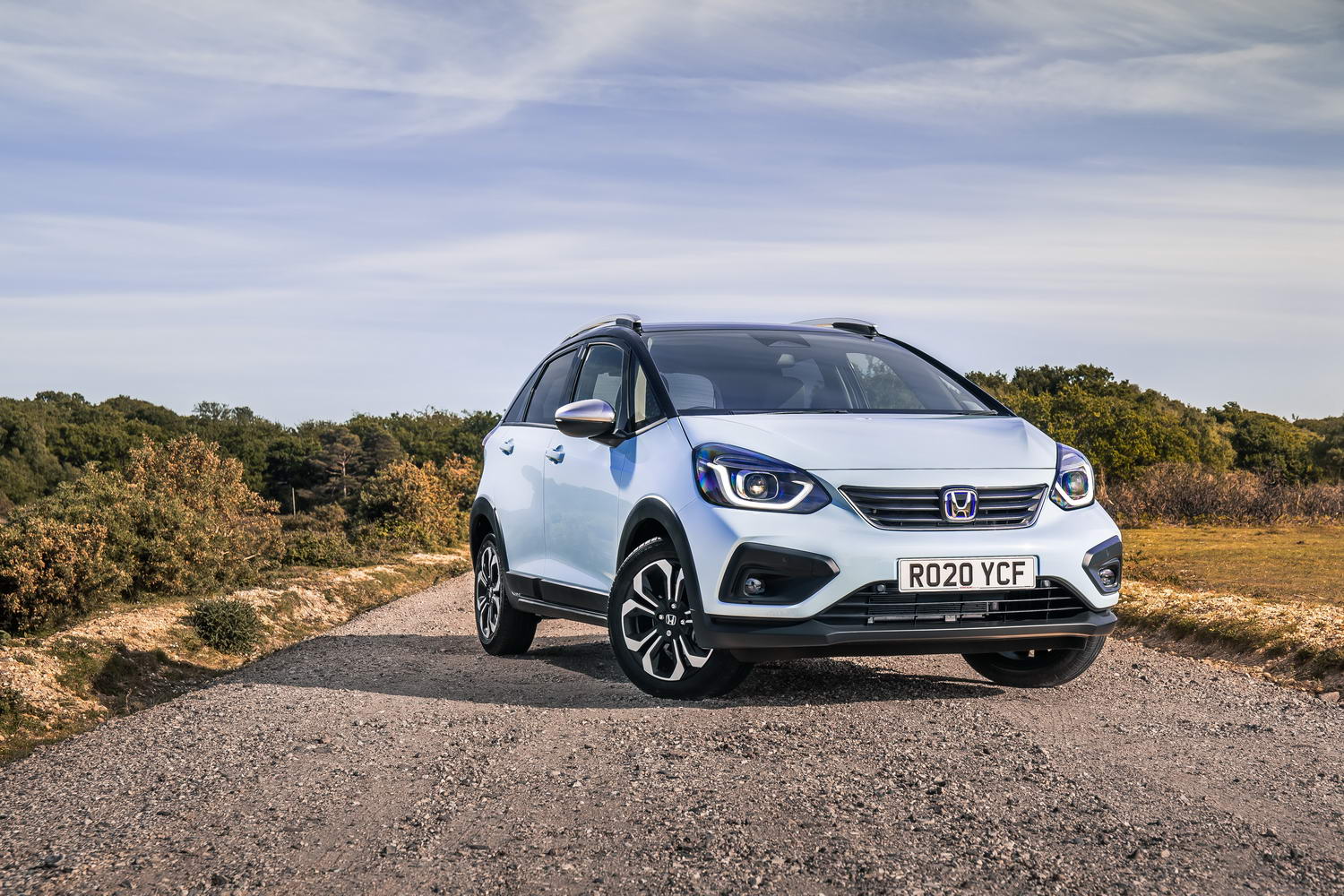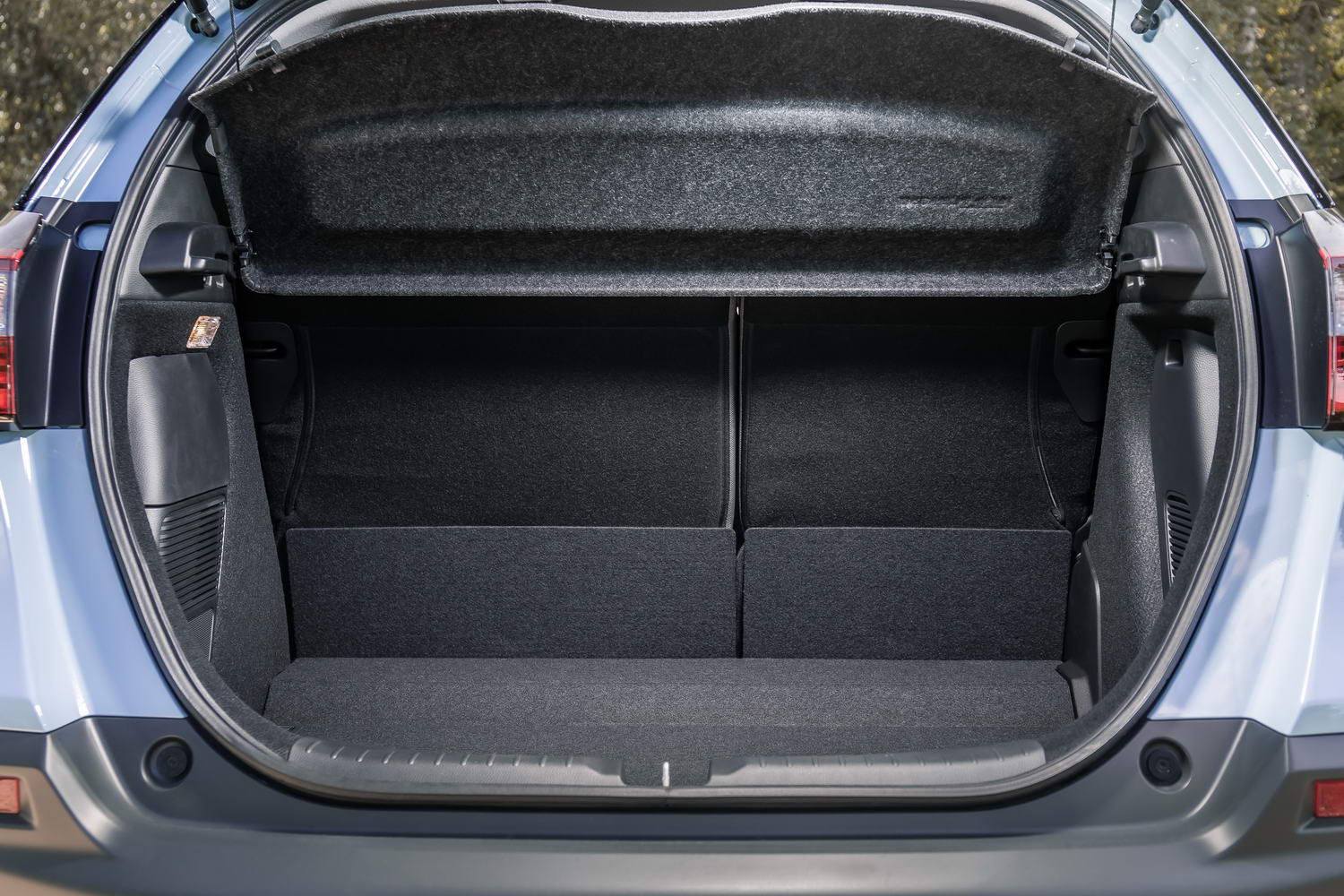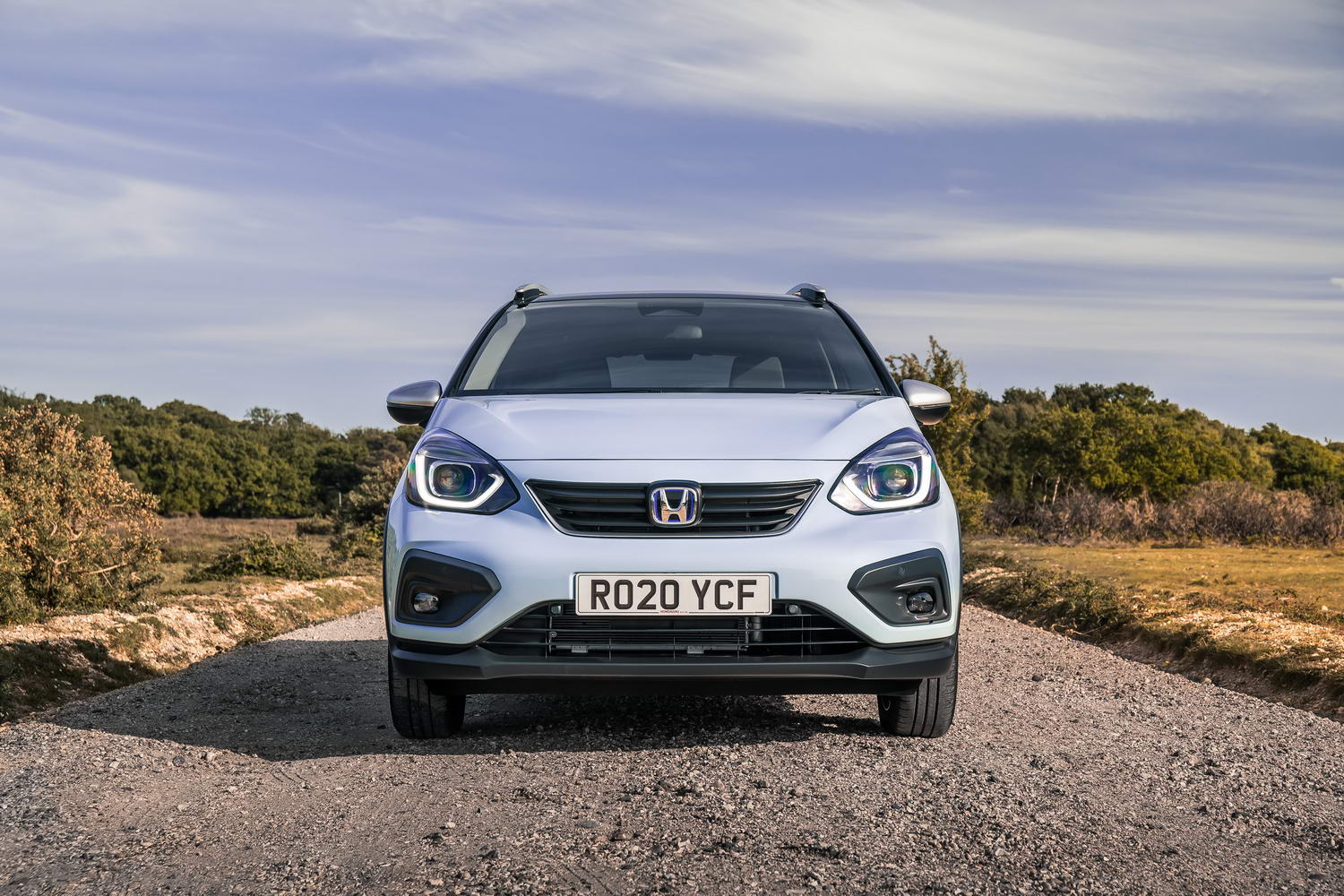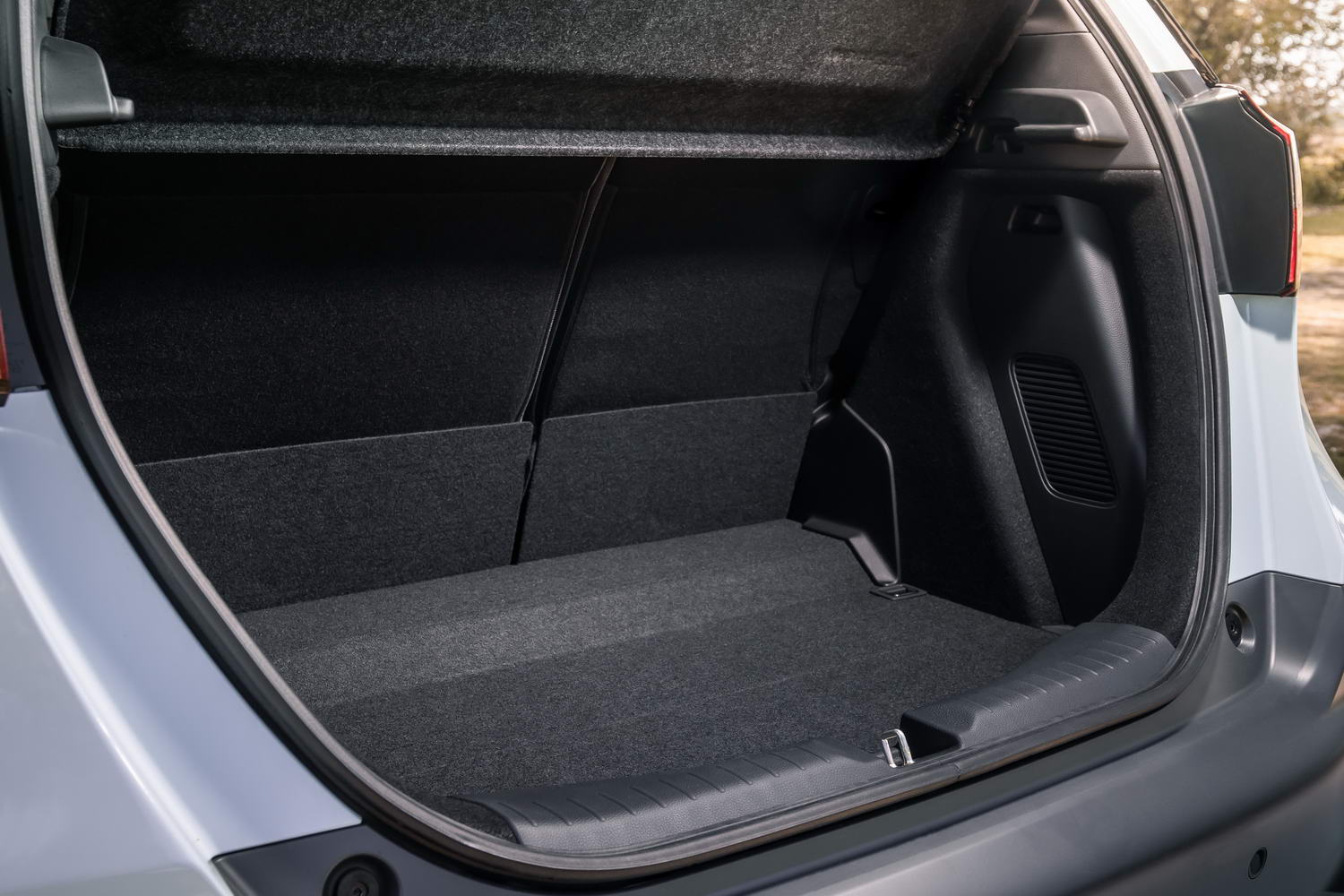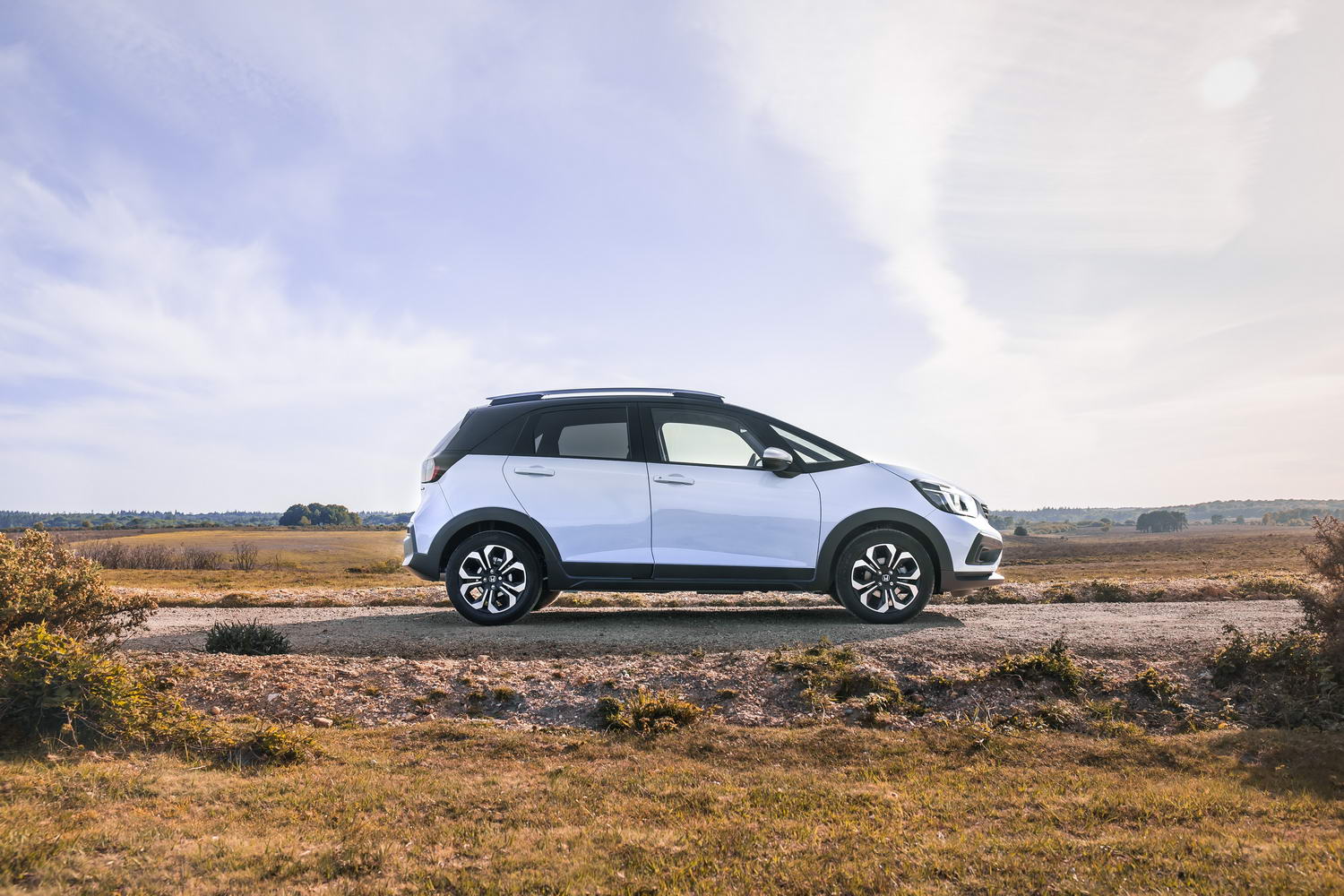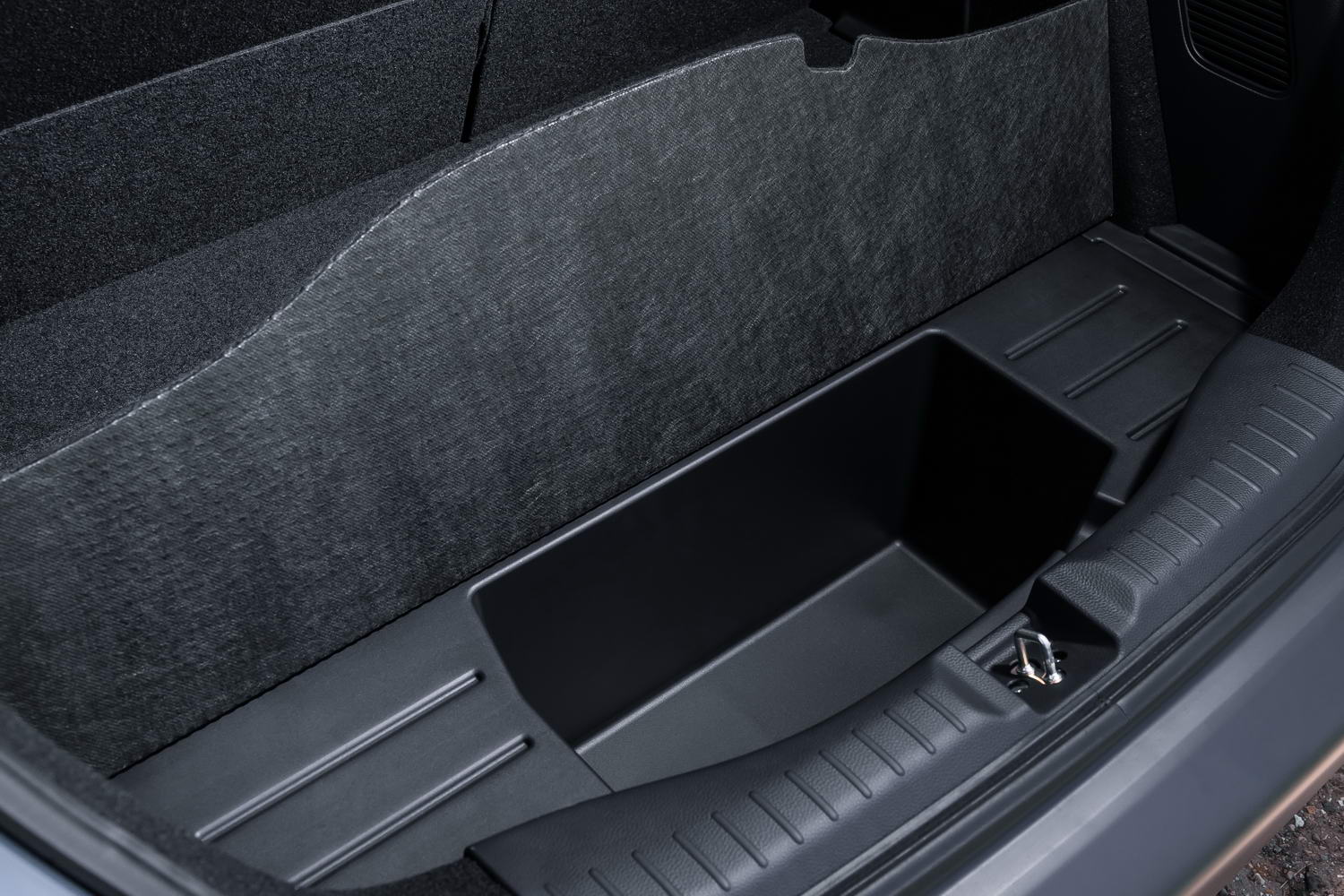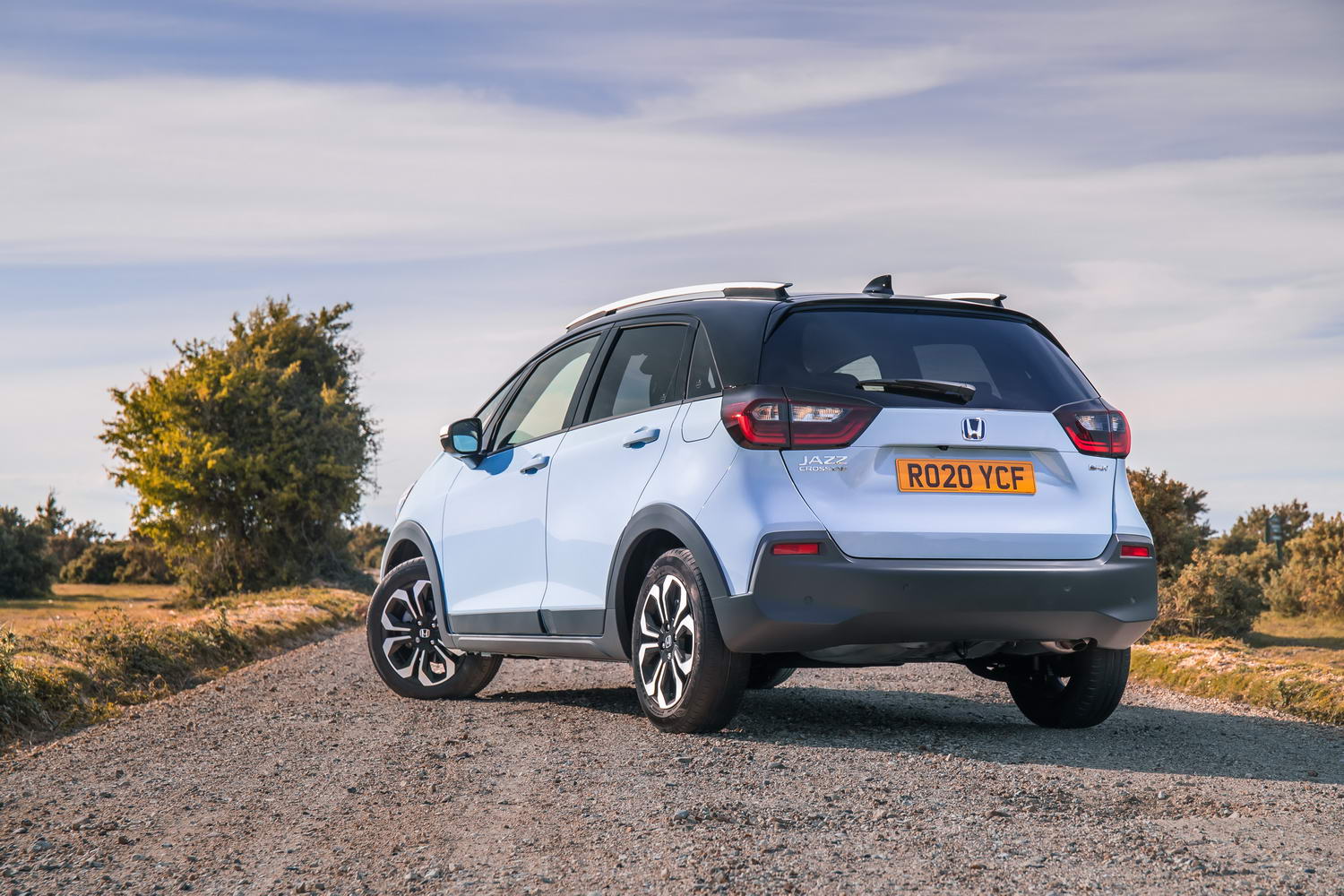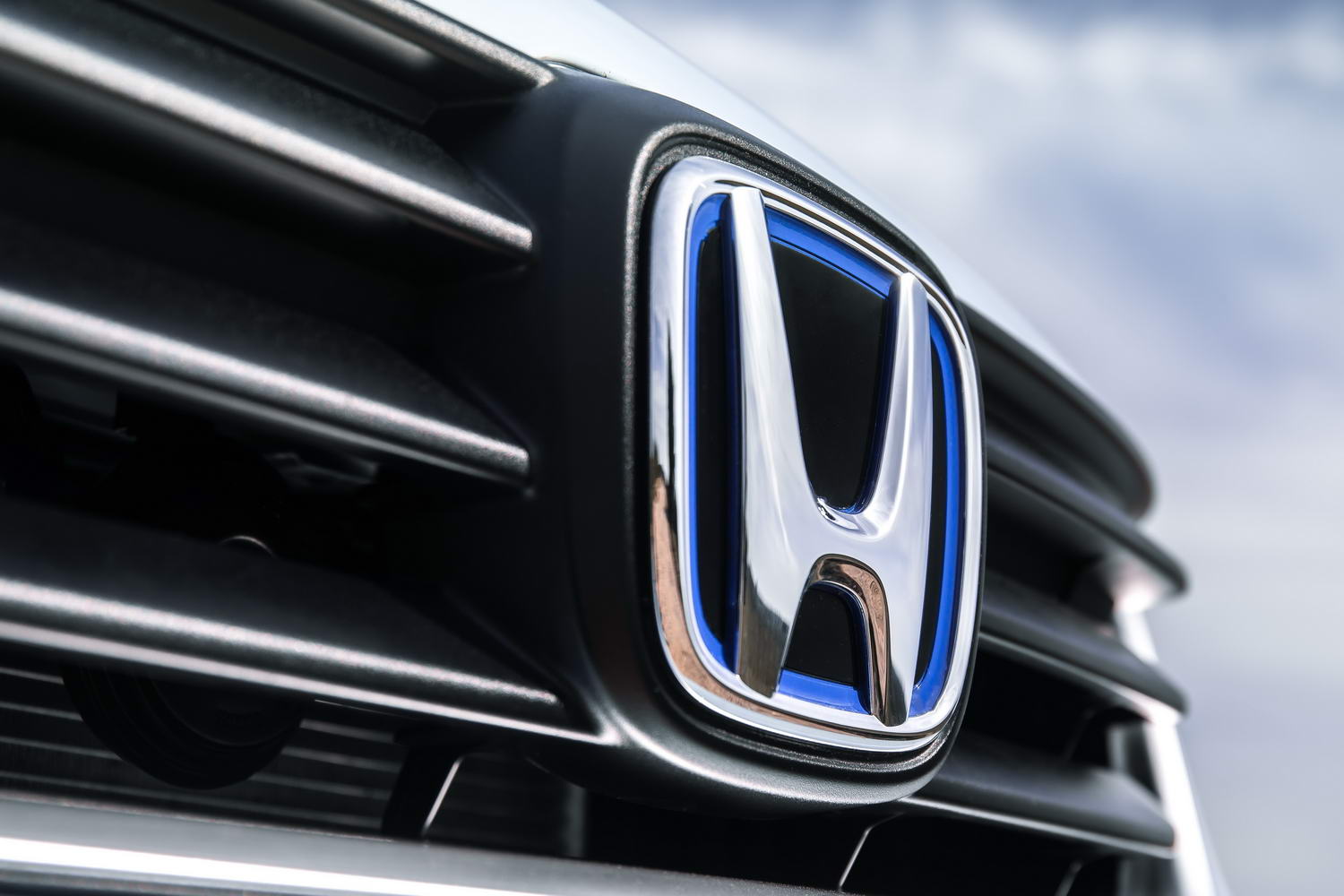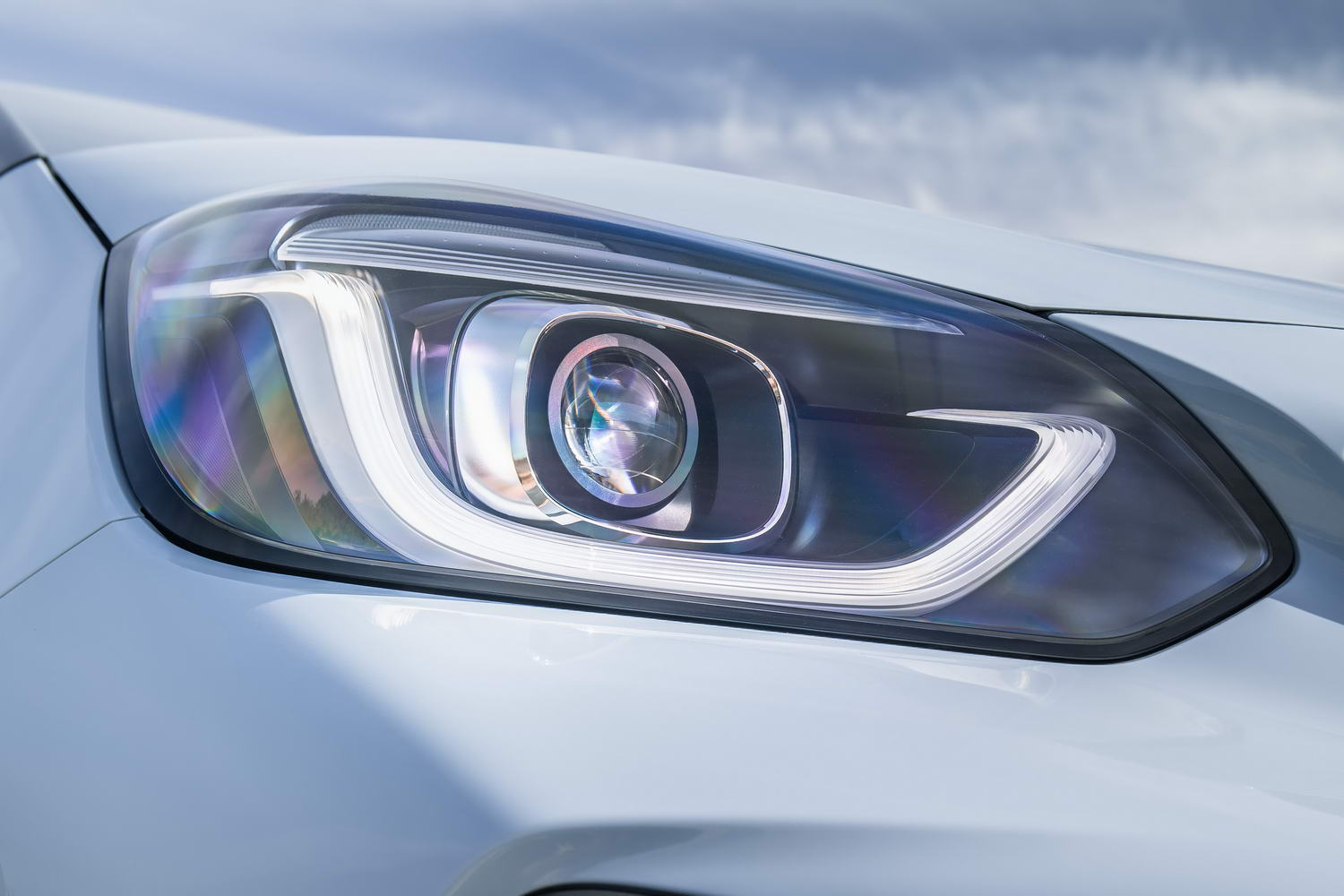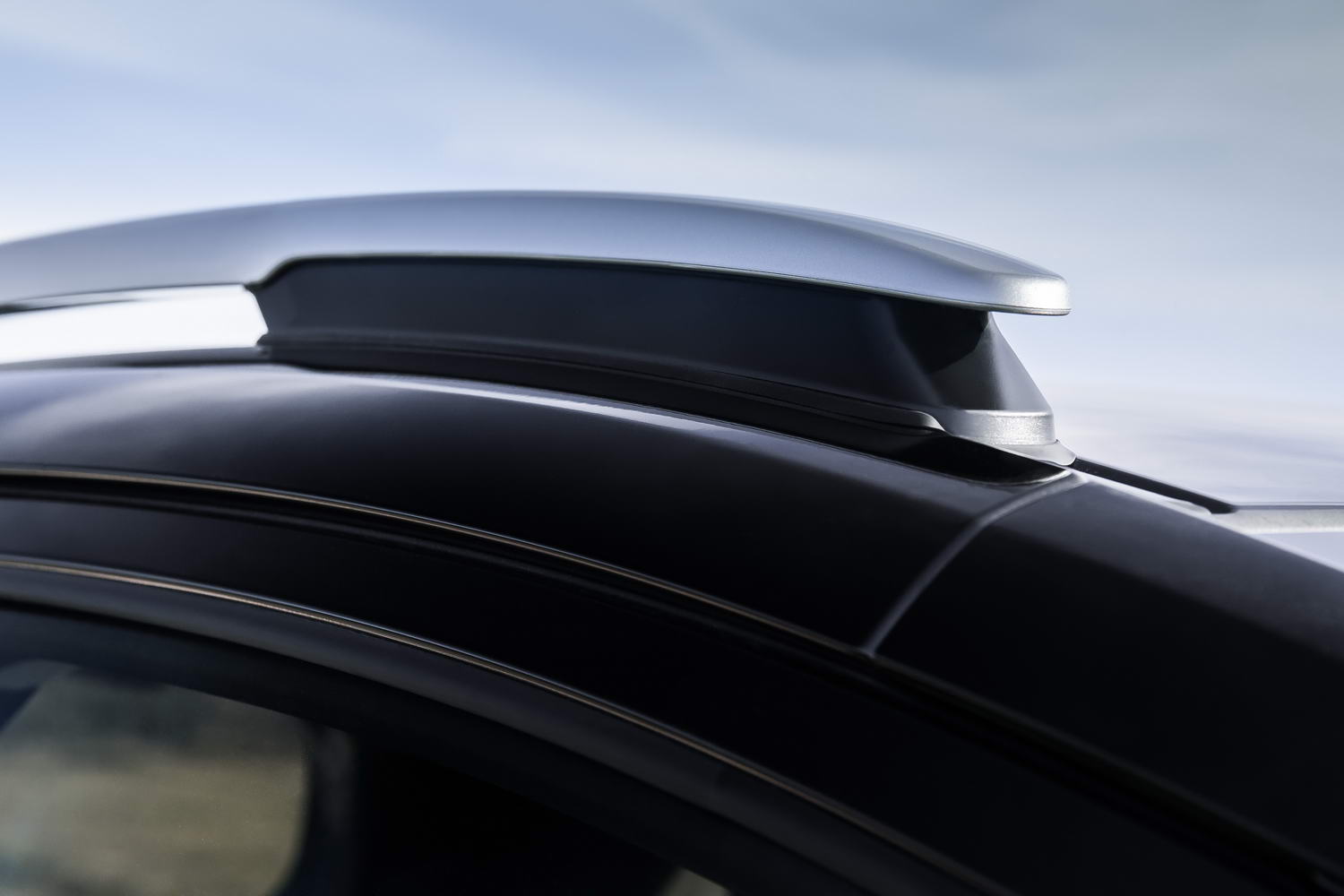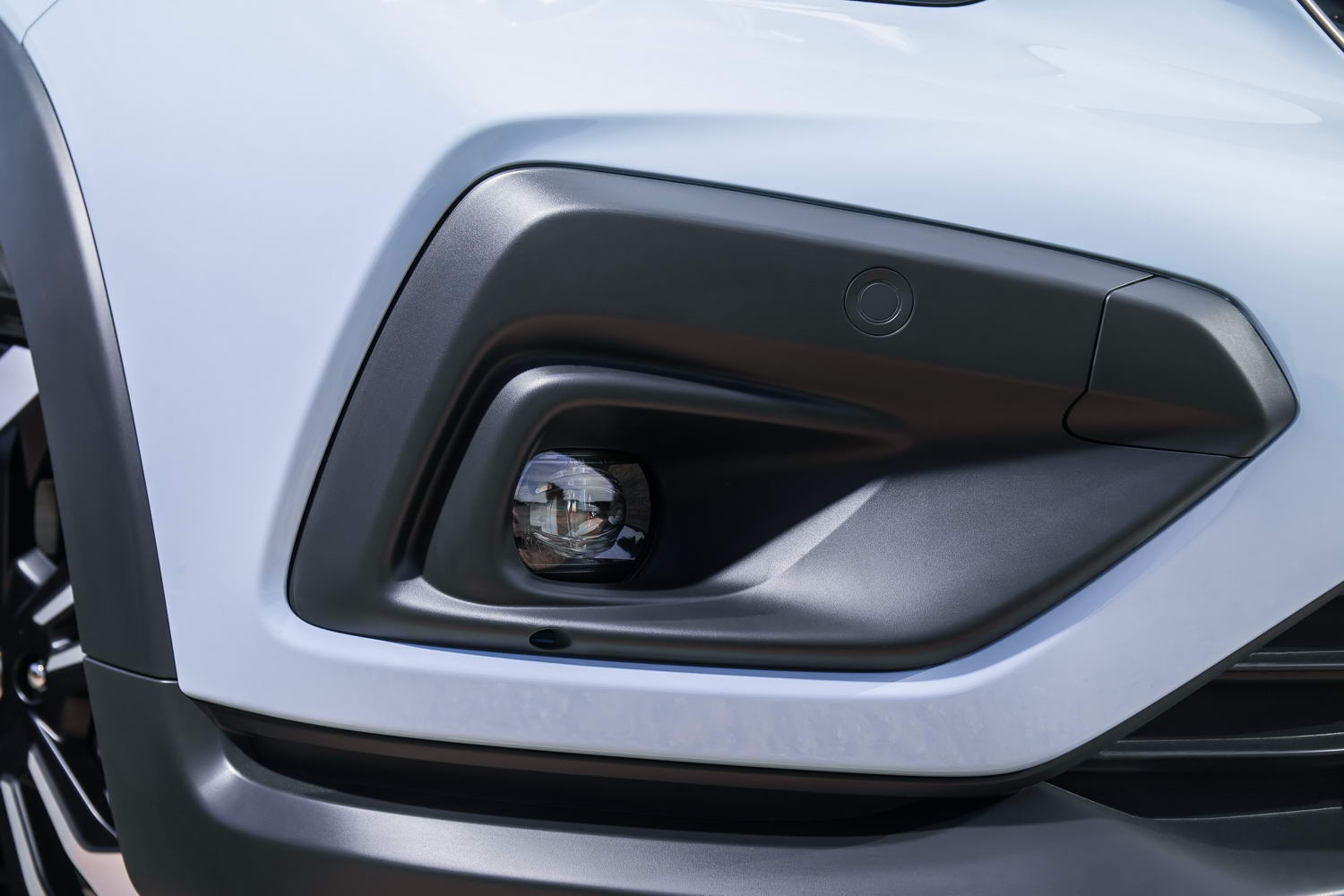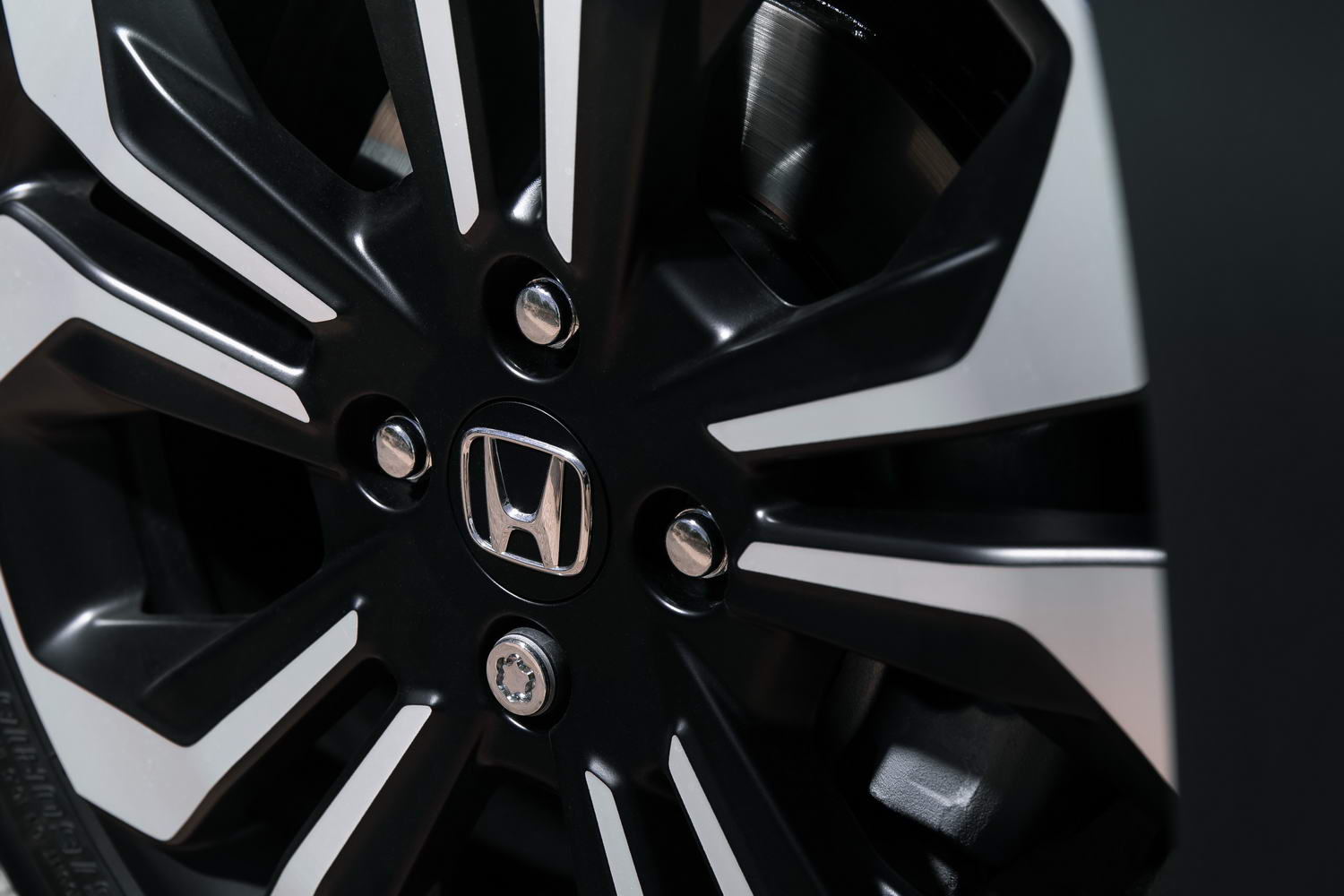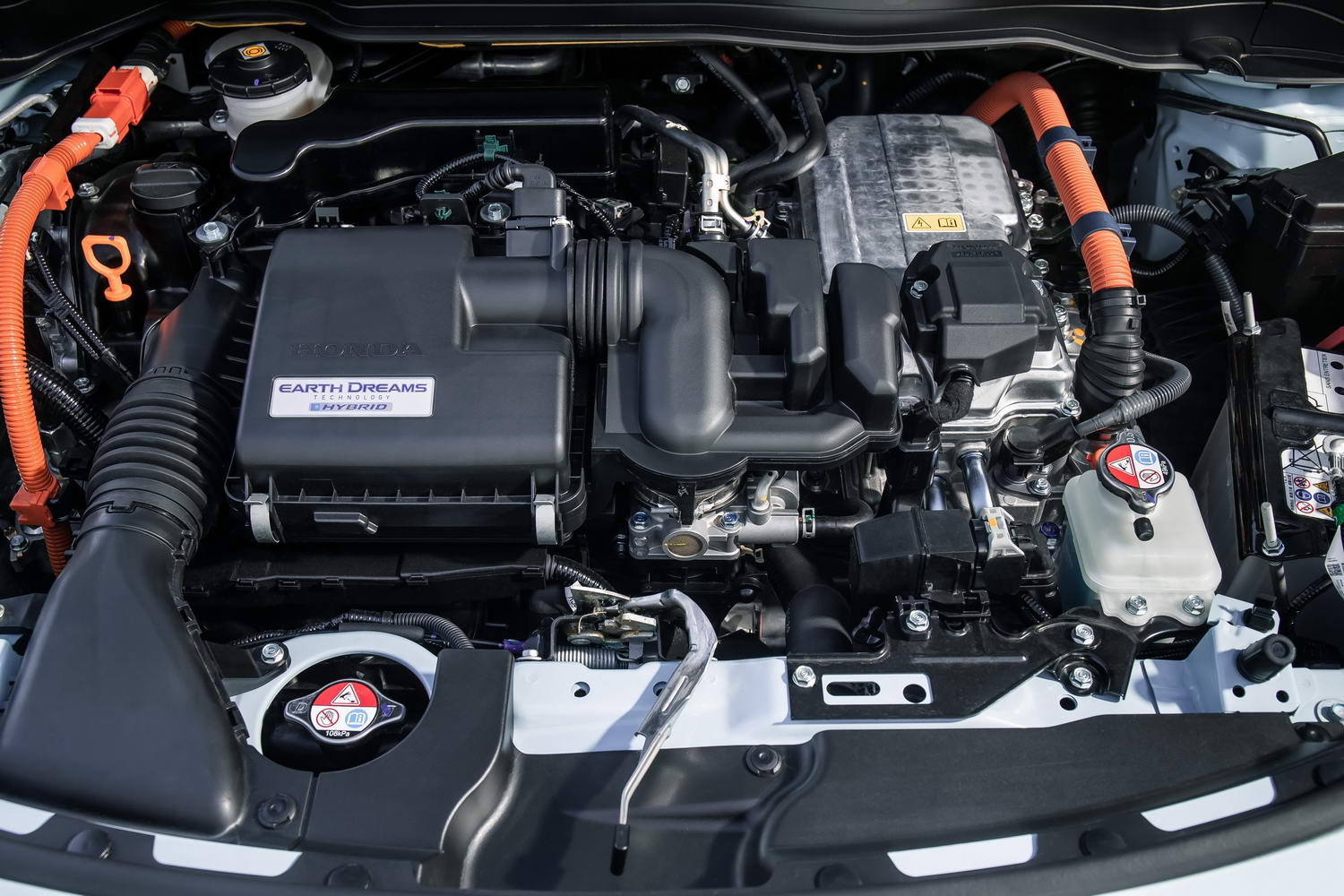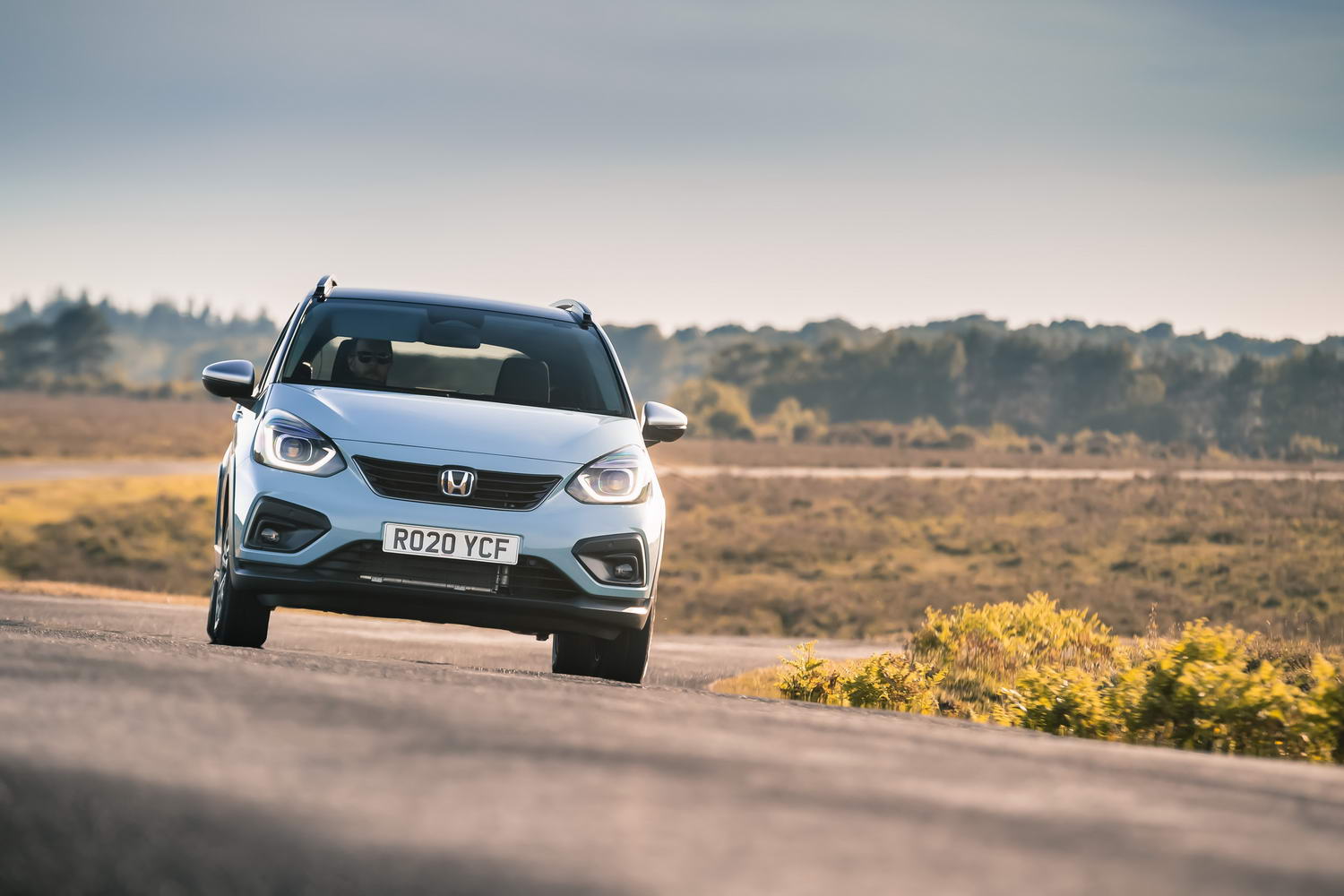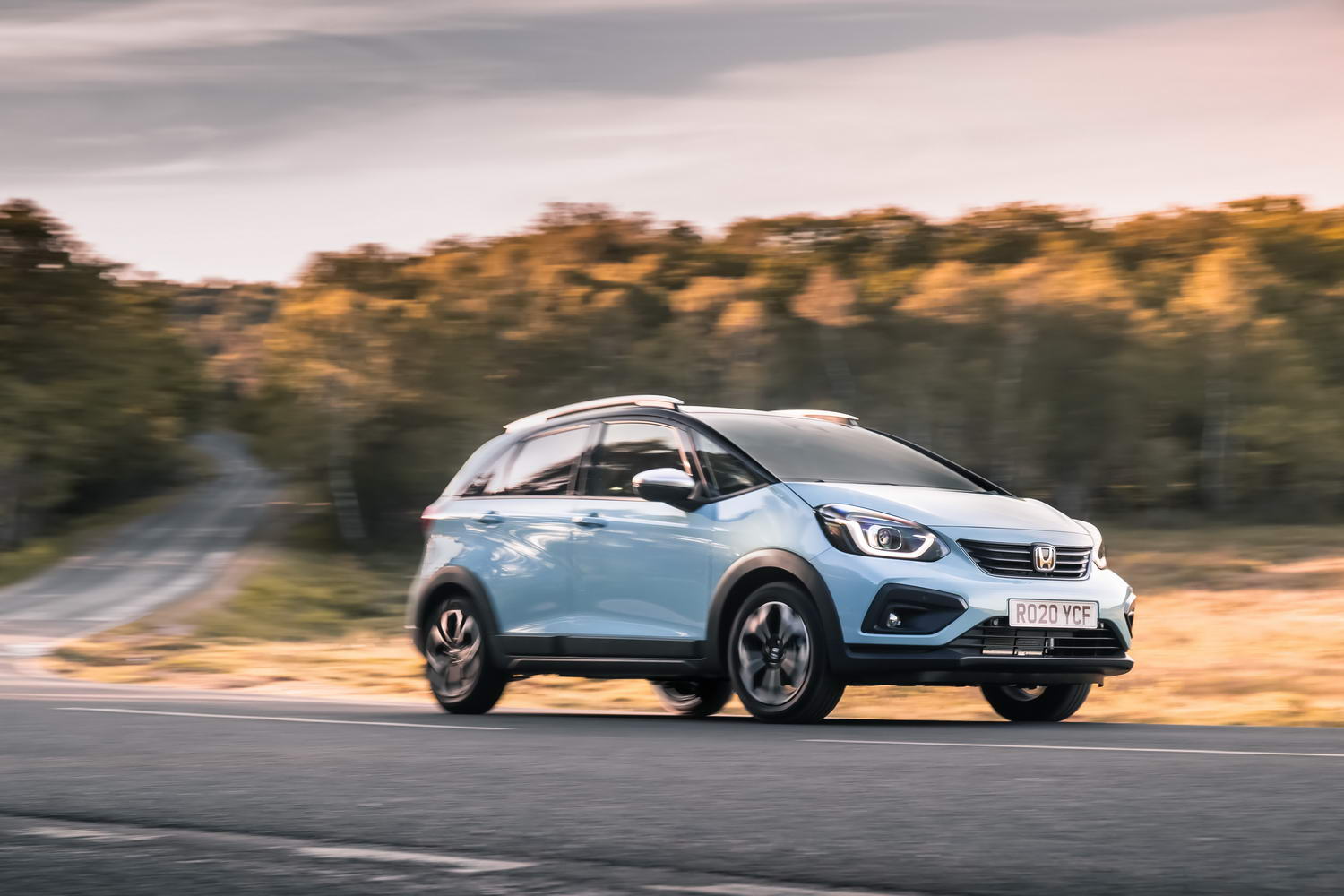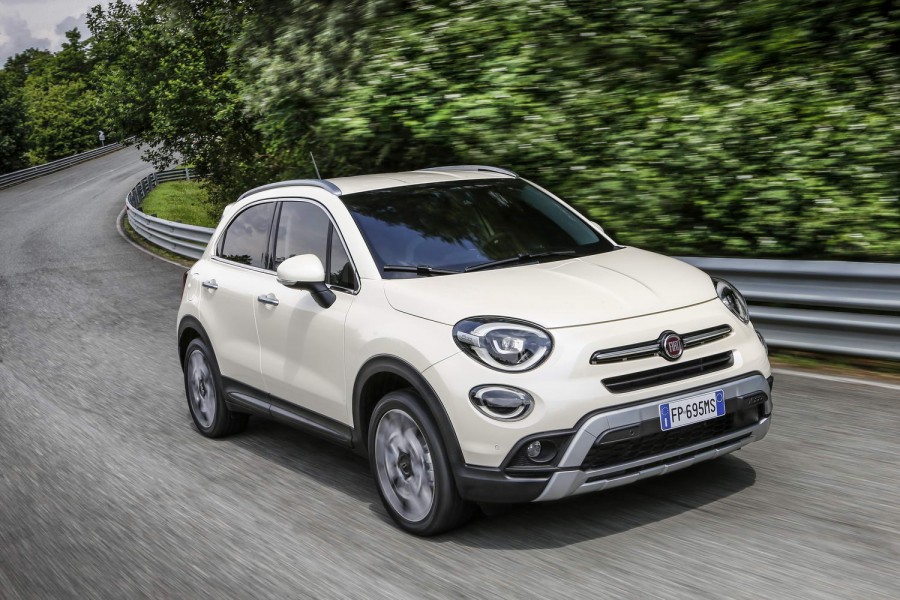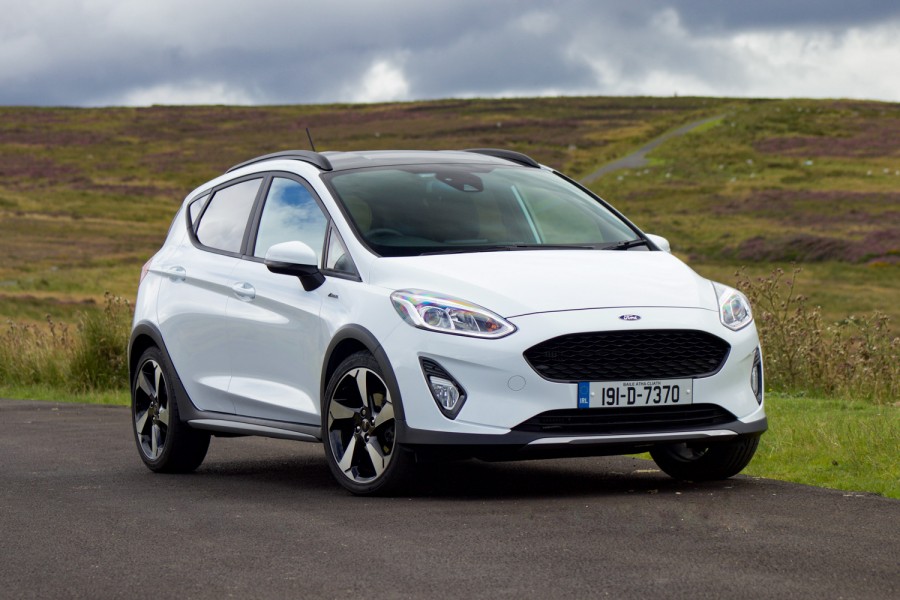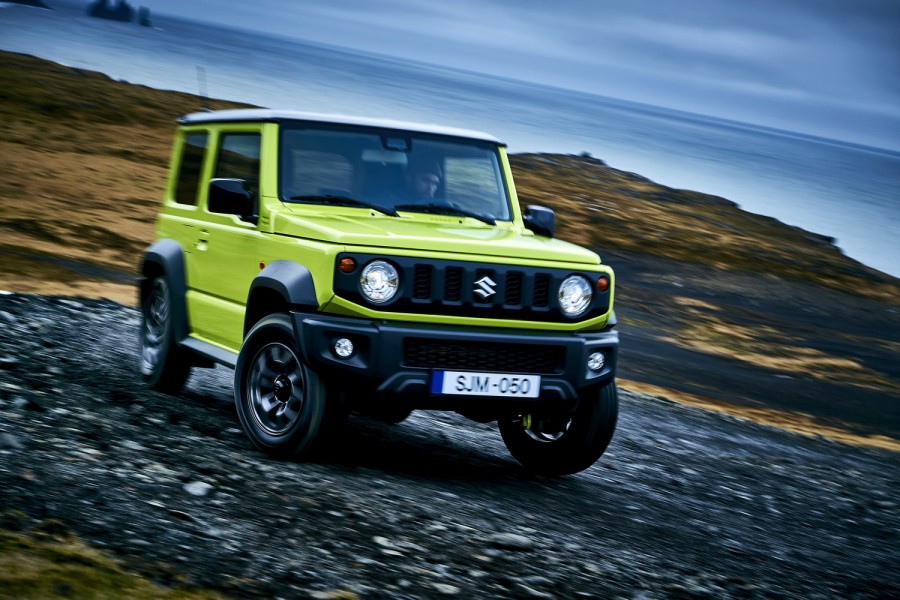Want a Honda Jazz Mk4 with a slightly different grille, quasi-butch styling and a higher driving position? Then you'll need this model: the lifestyle-inspired Jazz Crosstar.
In the metal
To create a Jazz Crosstar, Honda has altered the front grille and air intake arrangement, slapped black plastic cladding around the lower proportions of the supermini (and nowhere is this more noticeable than for the rear-bumper insert), sat a set of roof rails atop an upper body section that is finished in contrast colour to the rest of the car and then polished the whole lot off with silver door mirrors and its own specific design of 16-inch alloys. The Crosstar also rolls 29mm higher off the deck than the Jazz e:HEV. Inside is water-resistant upholstery for the seats and a bit more fabric used on various bits of the dashboard and door cards. It looks better on the outside than the regular Jazz and the interior is just as good, so overall we're big fans of the Crosstar's appearance.
Driving it
You get a similar driving experience from the Crosstar as you do from a Jazz e:HEV, with a few observations to make. Firstly, Honda is targeting this at lifestyle-type people, not off-roaders, so there's no four-wheel drive on the Crosstar nor any sort of 'Grip Control'-like clever electronic assistance for mud-plugging. In fact, the Crosstar comes with the same 109hp/253Nm i-MMD hybrid drivetrain as the e:HEV, the same reduction-gear transmission and the same front-wheel-drive layout.
So, what you're looking for from the Crosstar is something about its driving character that makes it stand out as being worth the extra outlay (see 'What You Get For Your Money', below) over and above a Jazz e:HEV. And, sadly, we couldn't find this one defining feature. Which is not to say the Jazz Crosstar is poor when you're behind that wonderful little two-spoke steering wheel - it isn't, it's just that it's exactly the same to drive as the cheaper, easier-on-fuel e:HEV hatchback. You'd therefore have to be really sold on the exterior appearance of the Crosstar to make it worthwhile, because its higher ride height does not give it an appreciably different driving position relative to other traffic, nor does it introduce any additional comfort into the ride quality of the Jazz. What you do get is a little bit more wind noise and a tiny sensation of increased body lean, although in defence of the Crosstar we'd say it's handling isn't really any worse than the regular car's as a result.
It's a fine enough thing, the Crosstar, and Honda isn't alone in the automotive world in making a lifestyle version of its B-segment product, but while we like it and think if you drove it in isolation then you'd probably be more than happy with it, the e:HEV model just seems to make a touch more sense in many regards.
What you get for your money
Like the regular Jazz, the price of the Crosstar is not yet confirmed for Ireland. The problem is, in other markets, Honda is positioning it as a model that sits above the plushest version of the regular Jazz, which means it is priced beyond such a car too. That makes it rather expensive and, for that, you get a Honda Jazz that is less efficient (albeit, its higher emissions doesn't affect its annual rate of tax), slower for acceleration and top speed and which has a smaller boot to the tune of six litres. We guess it comes down to how much you want a slatted radiator grille, two-tone bodywork and a marginally loftier driving position as to whether you think the Crosstar will be worth any possible price premium...
Summary
While many will look at the Honda Jazz Crosstar and say 'why?', we can sort of see what the Japanese company is getting at. It wants the Jazz Mk4 family to have a more youthful audience and a lifestyle-oriented version is just the way of achieving such a thing. So if you aren't against the idea of a Honda Jazz in the first place and you regularly purchase tall items that need transporting in Magic-Seat-accessible rear footwells, then the Crosstar is probably the perfect car for you. For everyone else, the regular Jazz e:HEV will serve just fine.

